
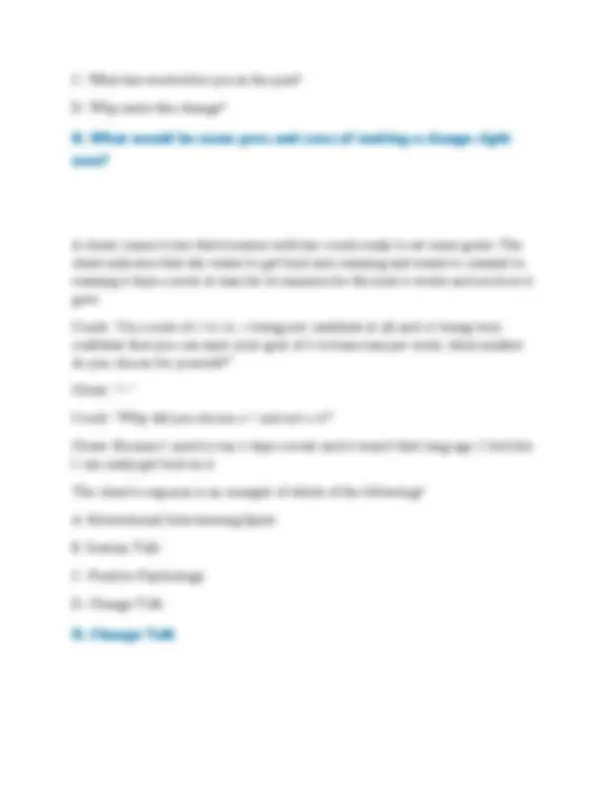
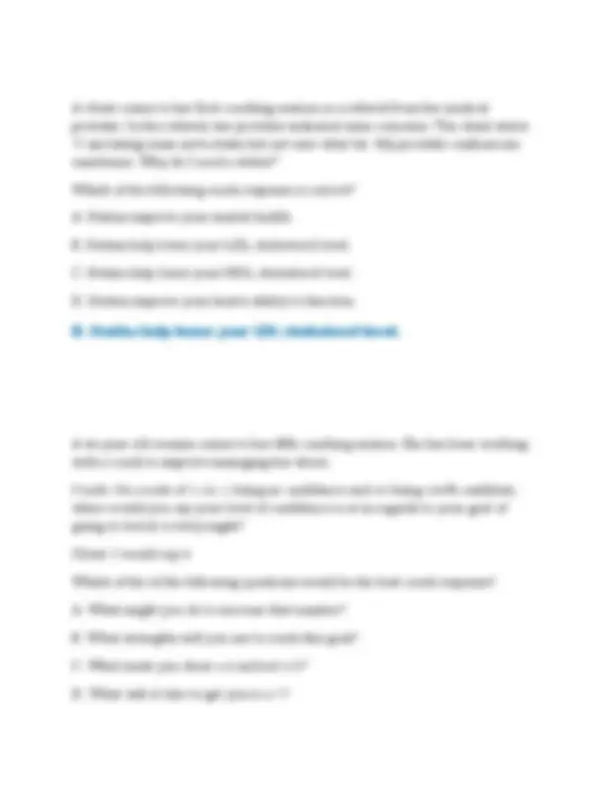
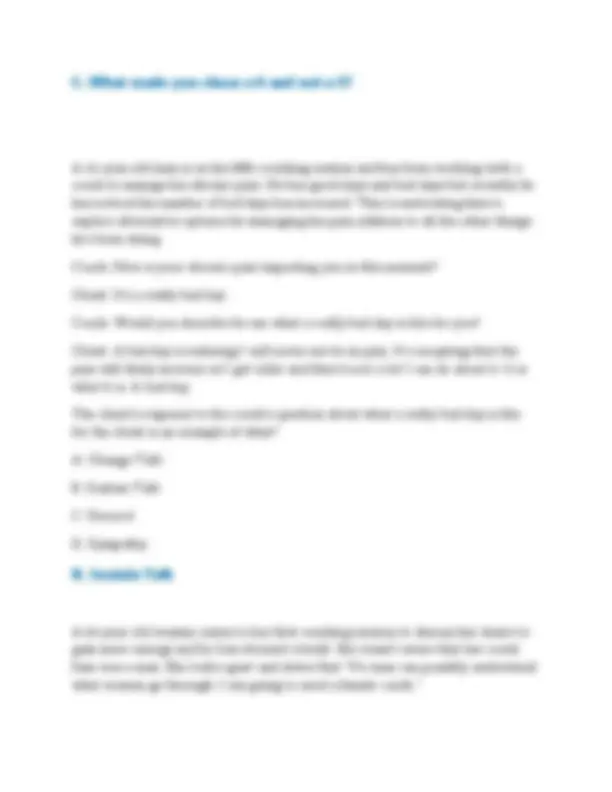
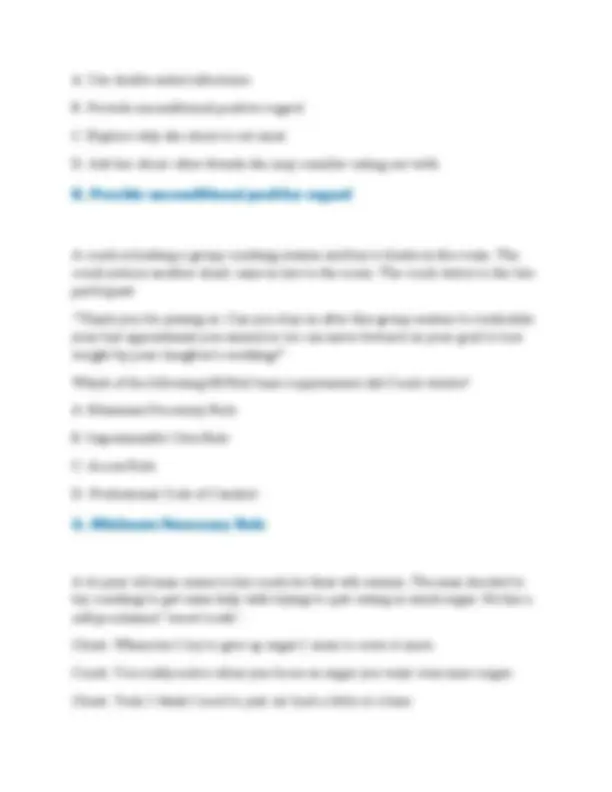
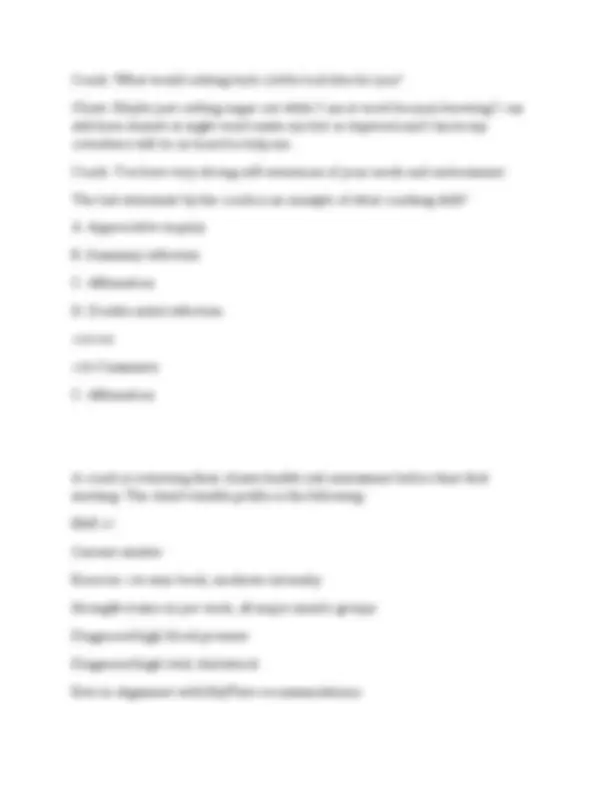
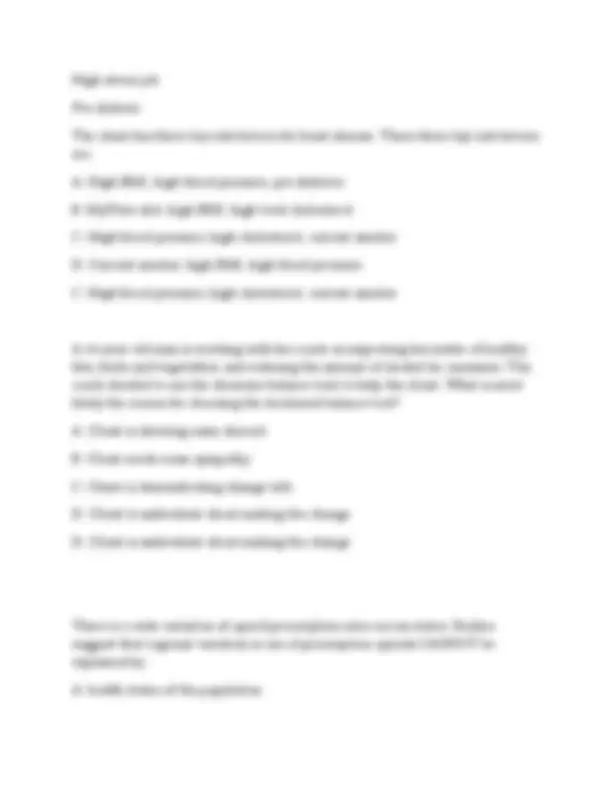
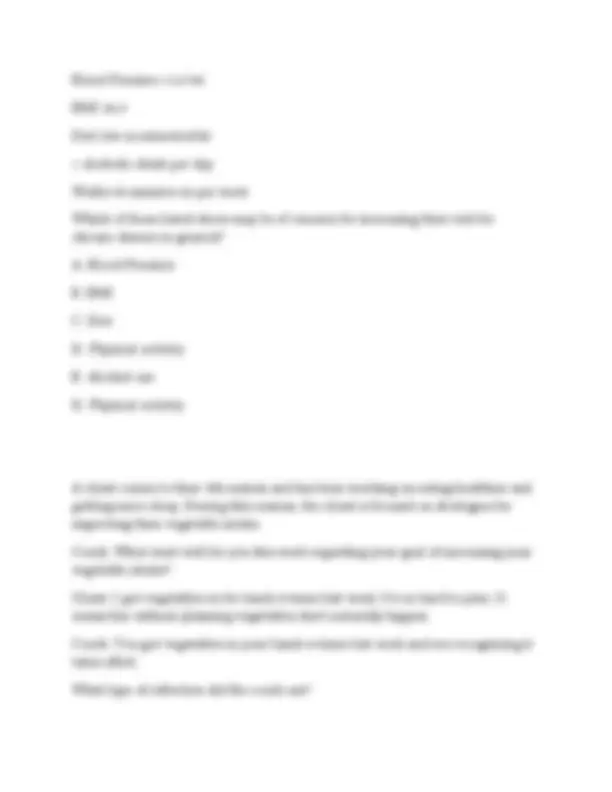
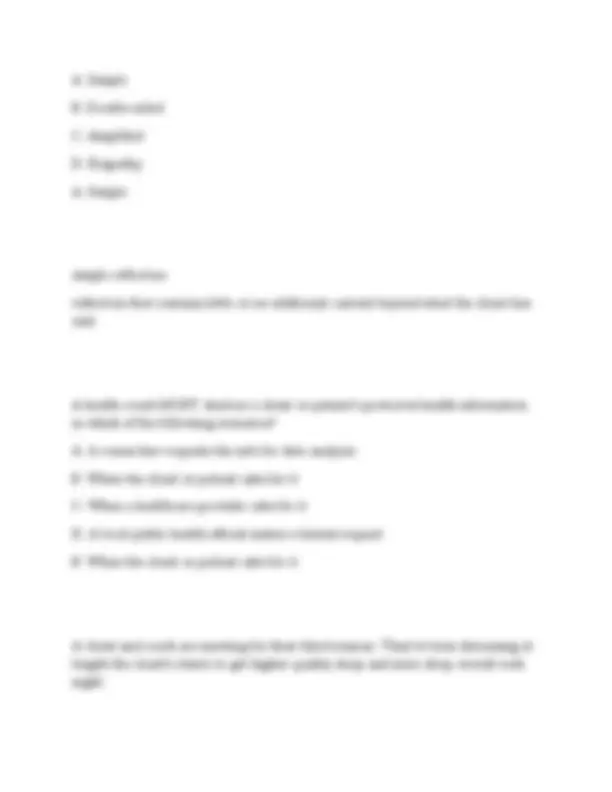
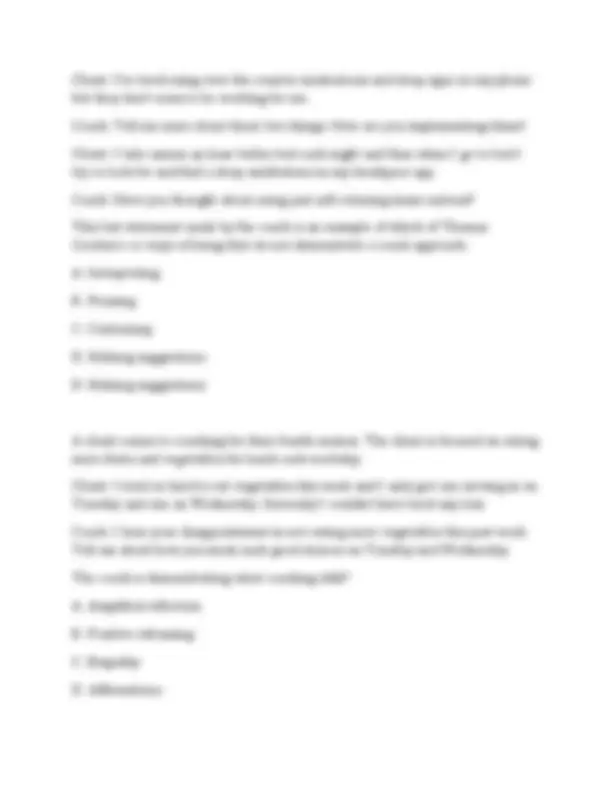
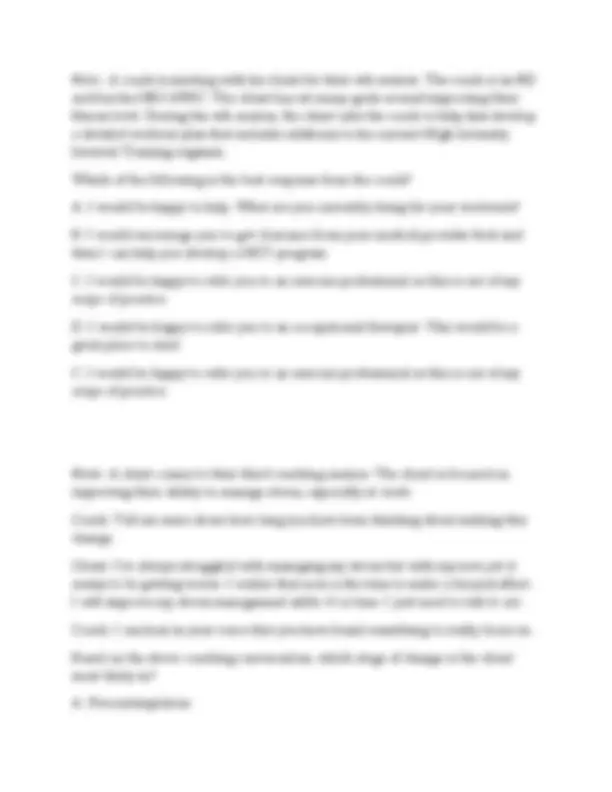
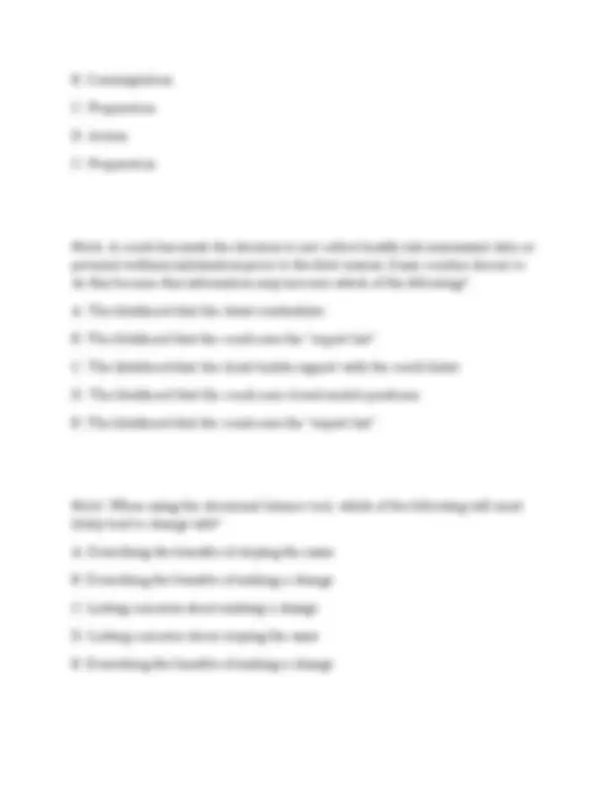
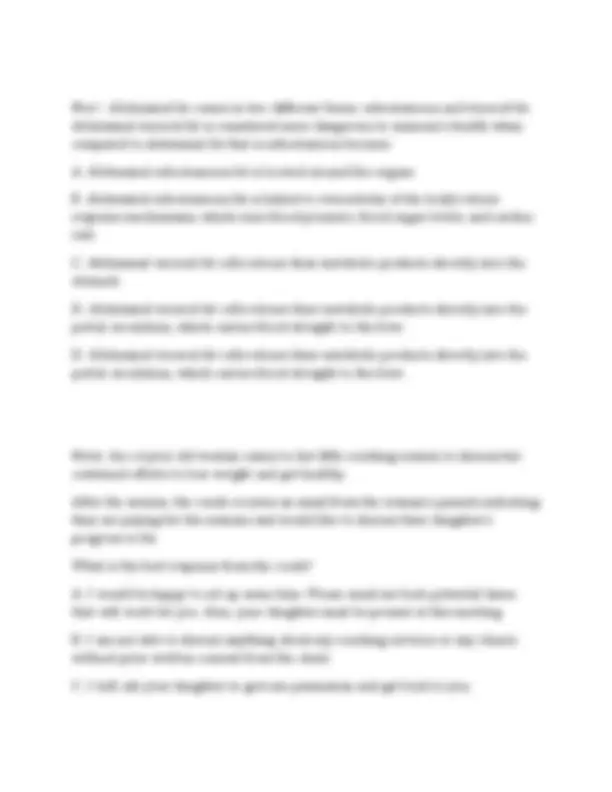
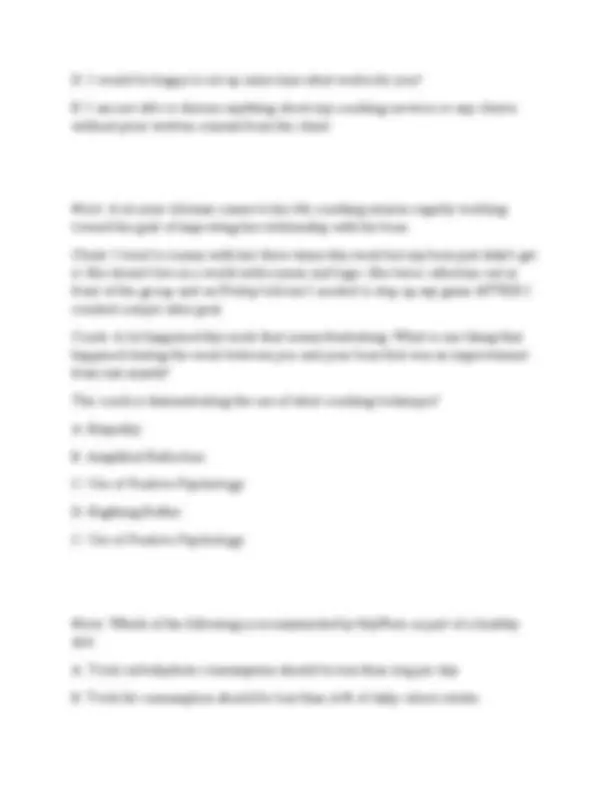
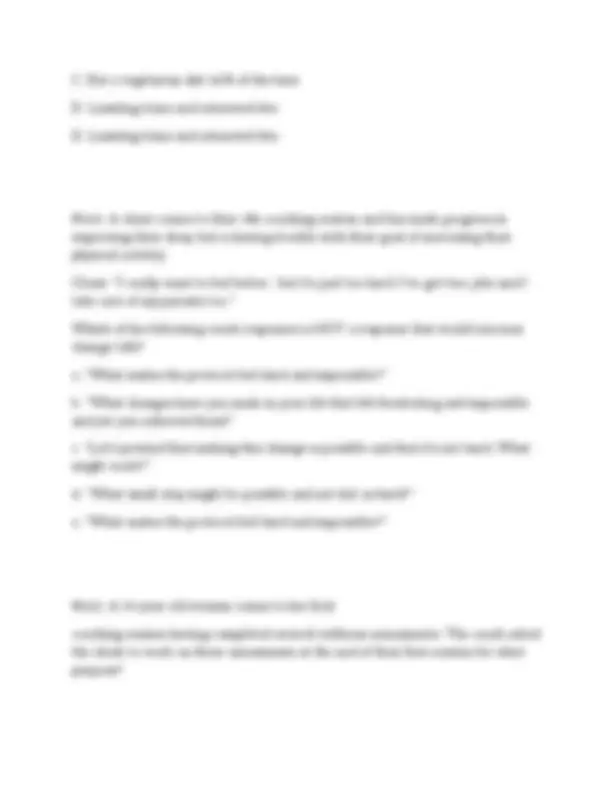
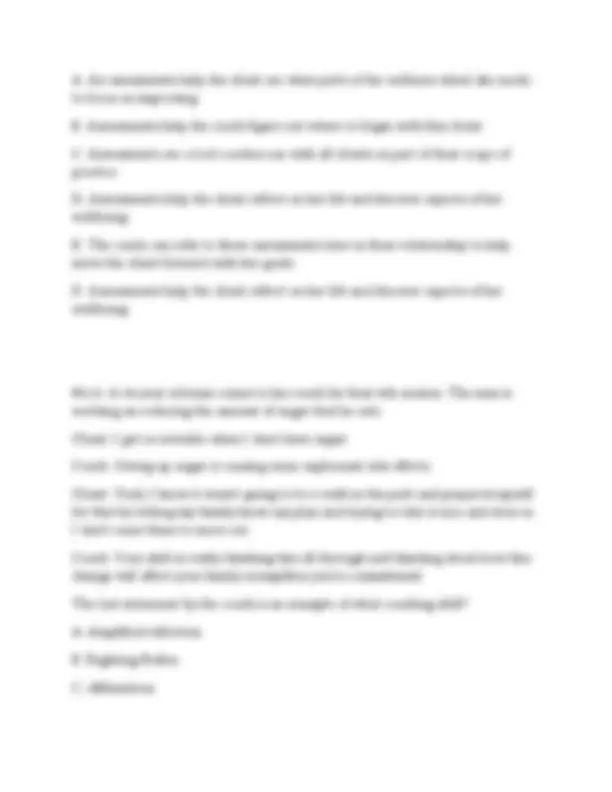
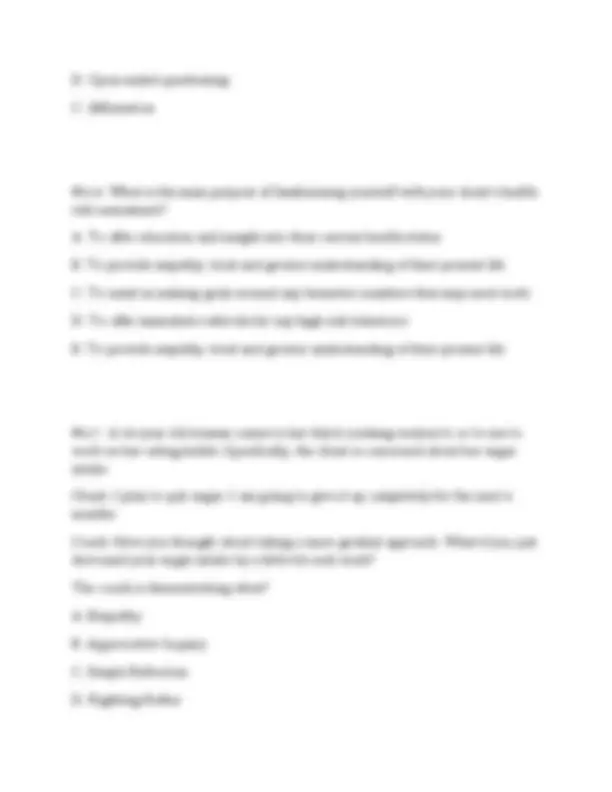
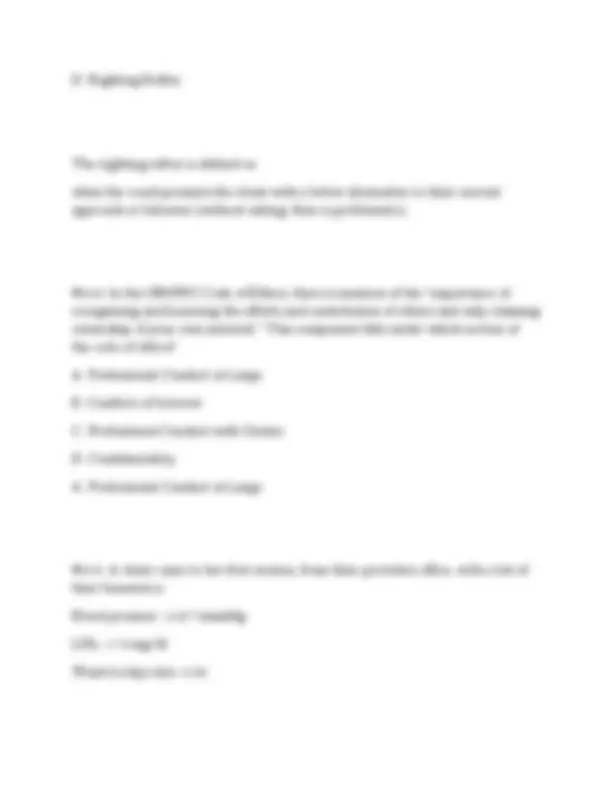
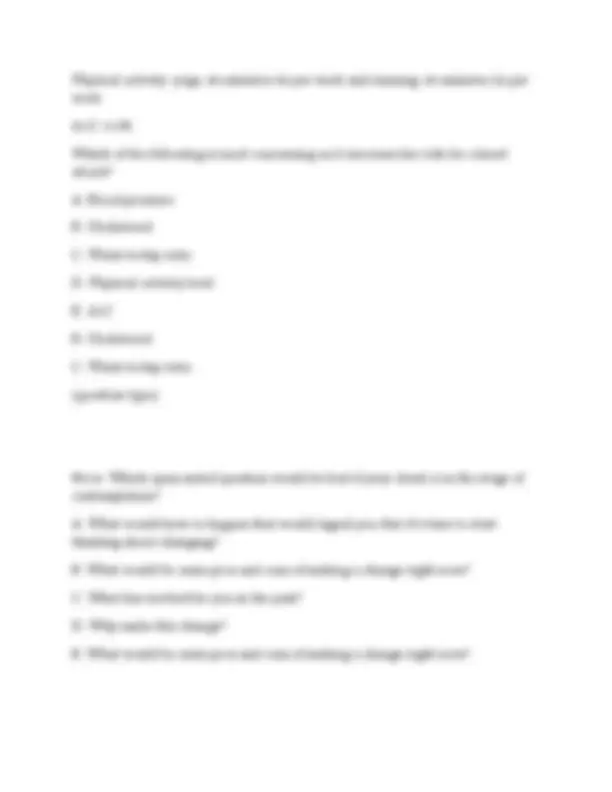
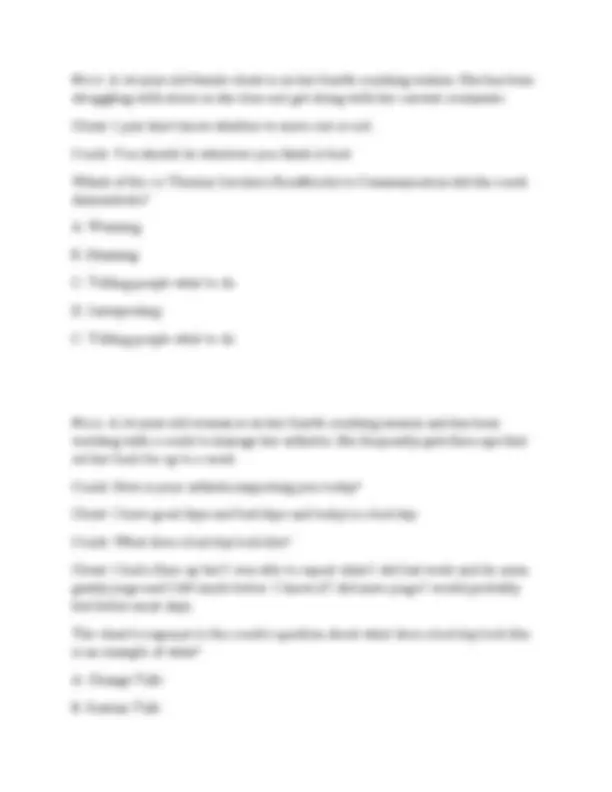
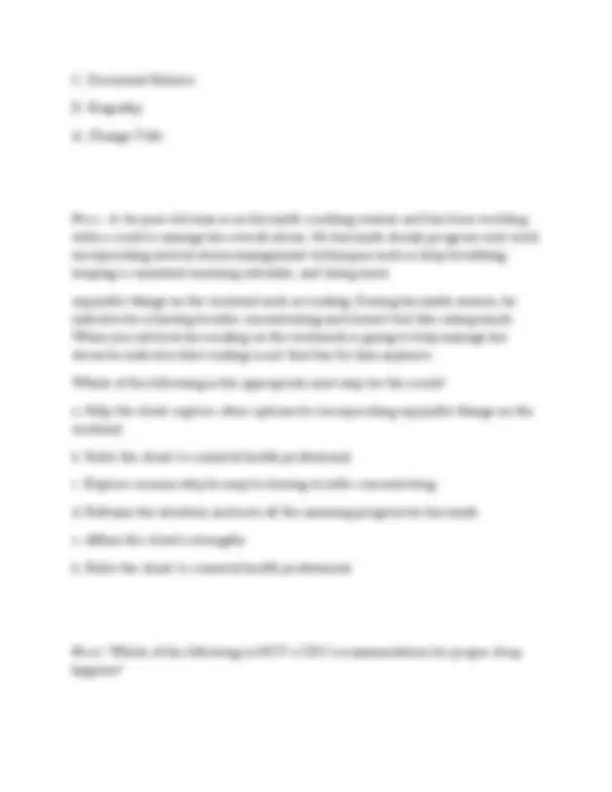
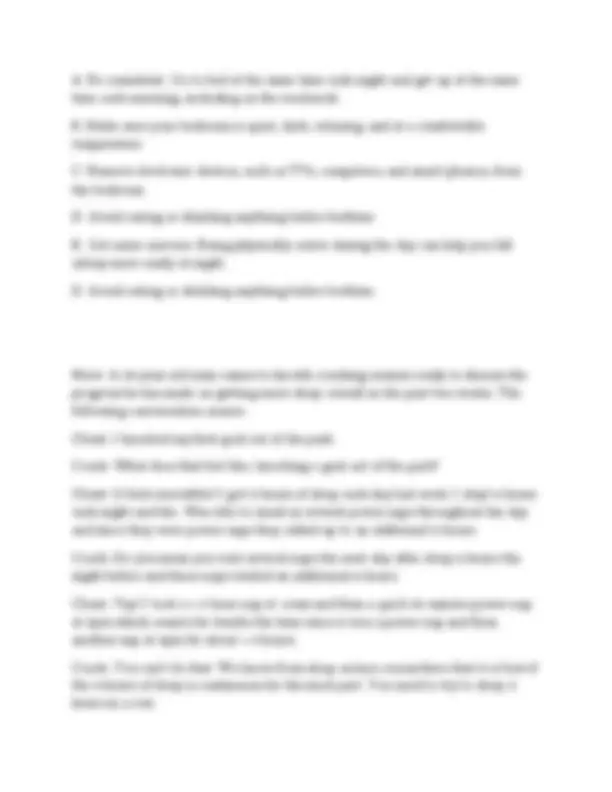
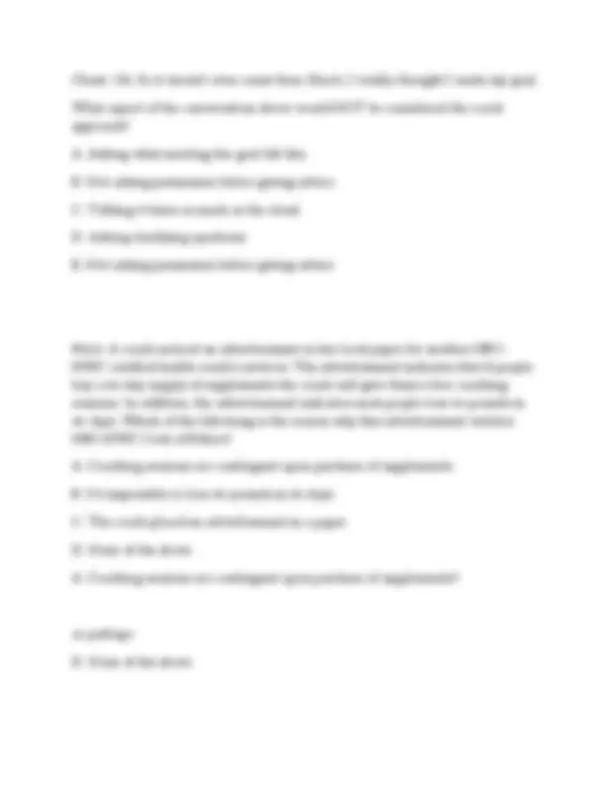
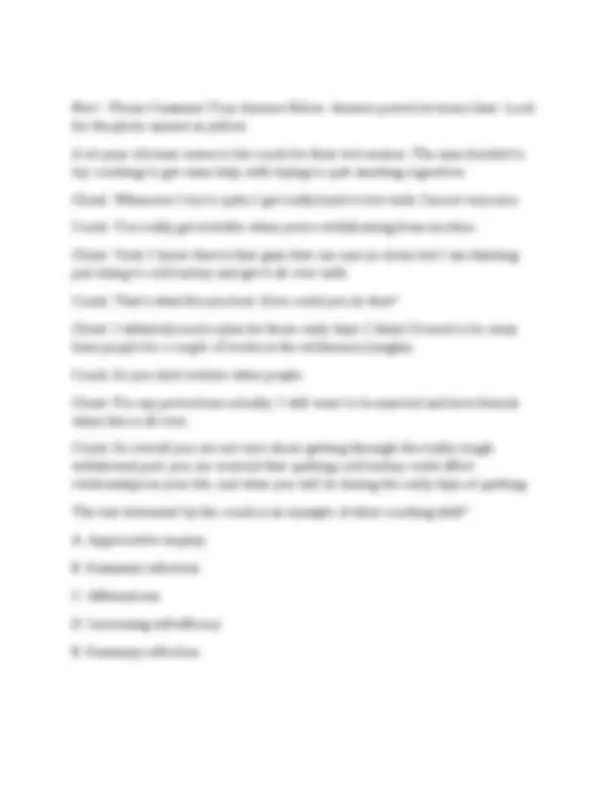
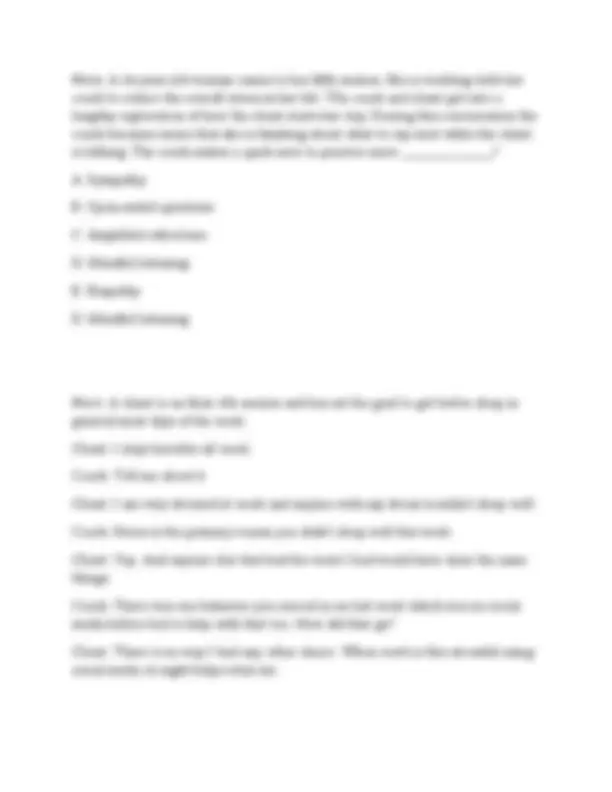
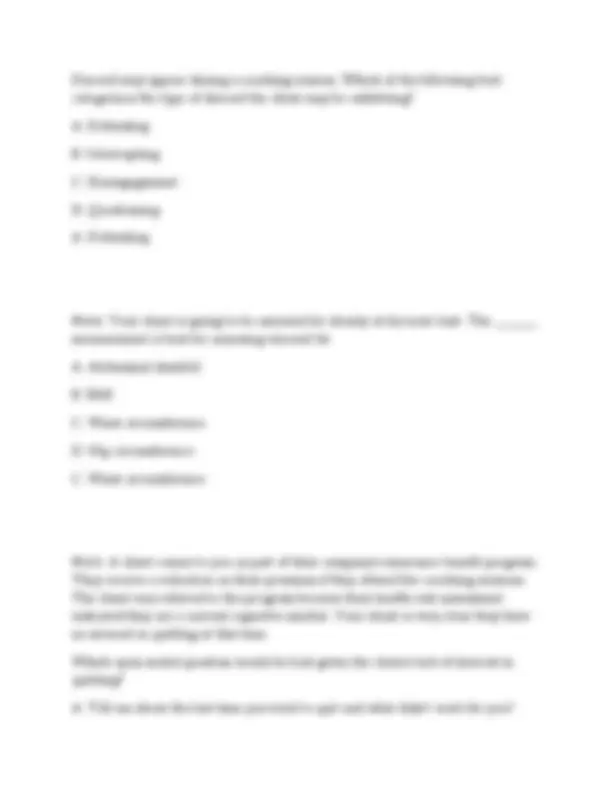
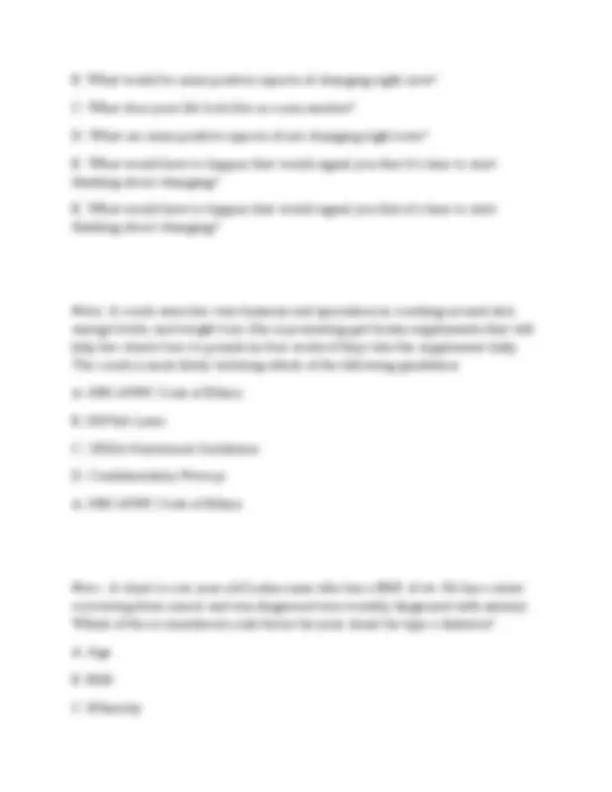
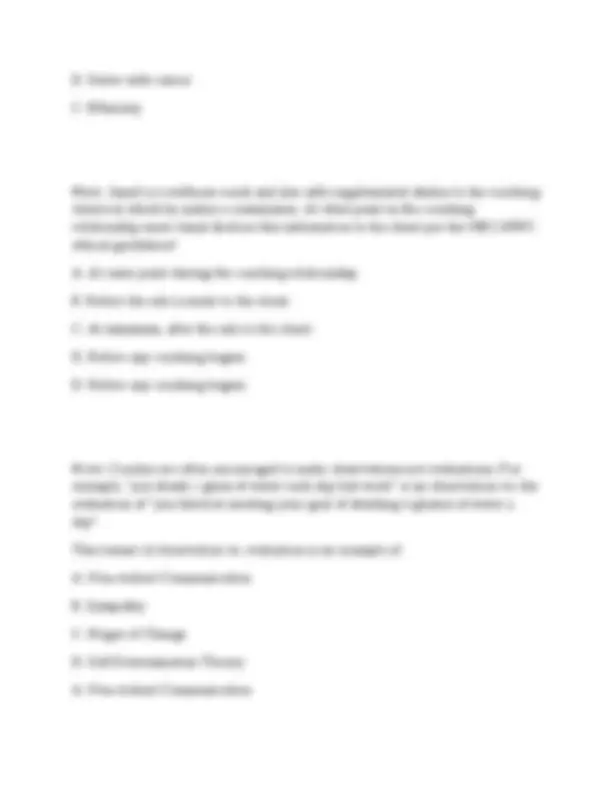
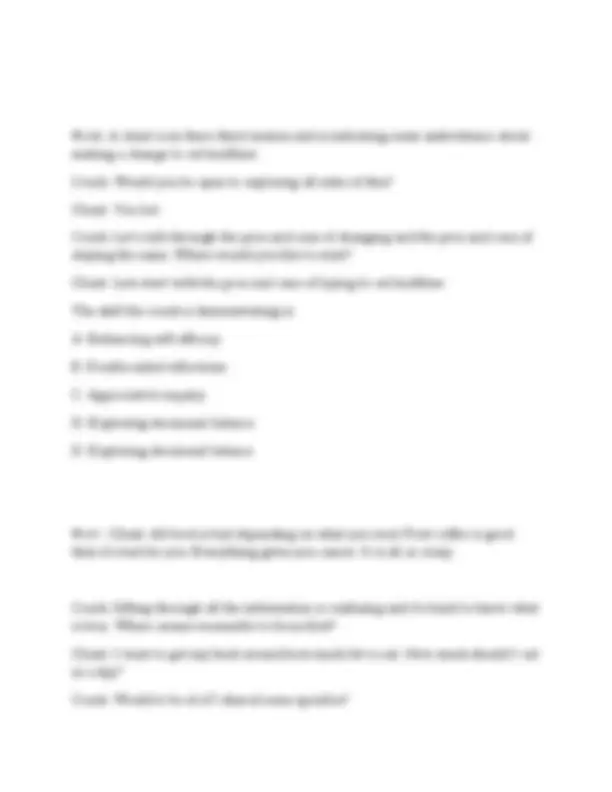
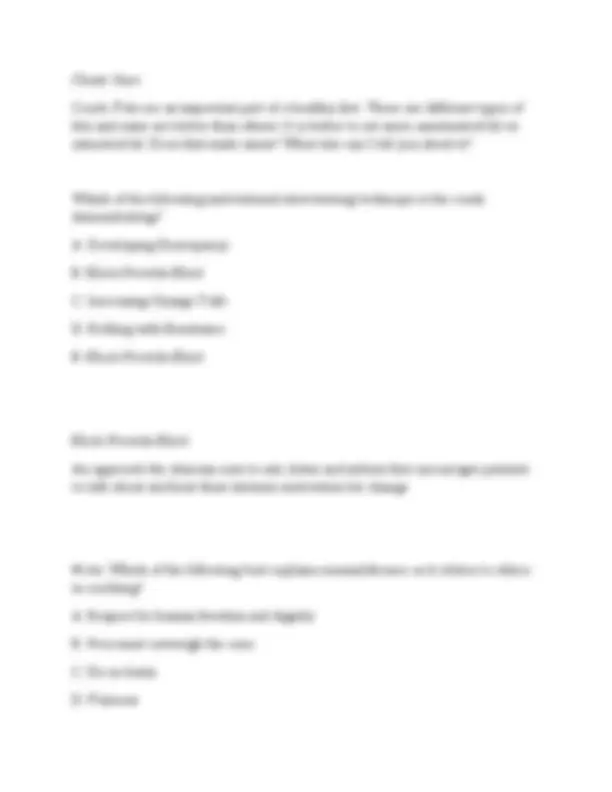
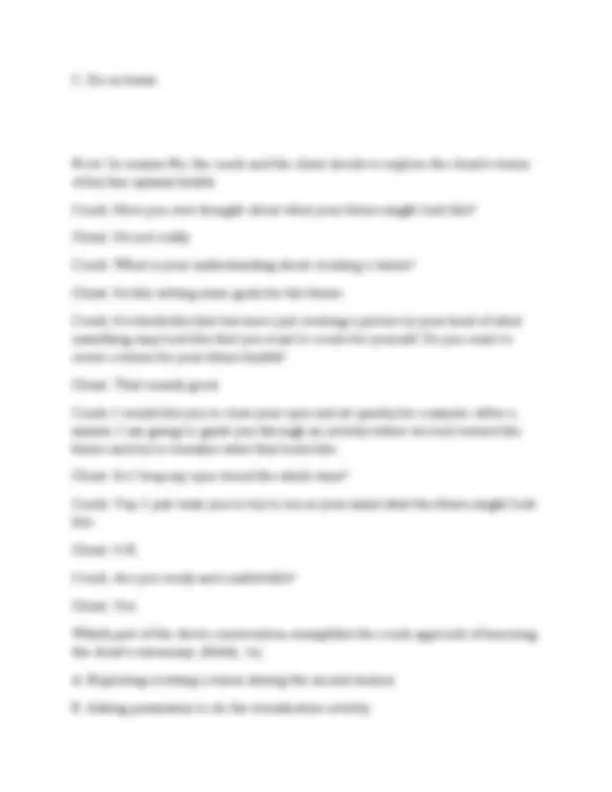
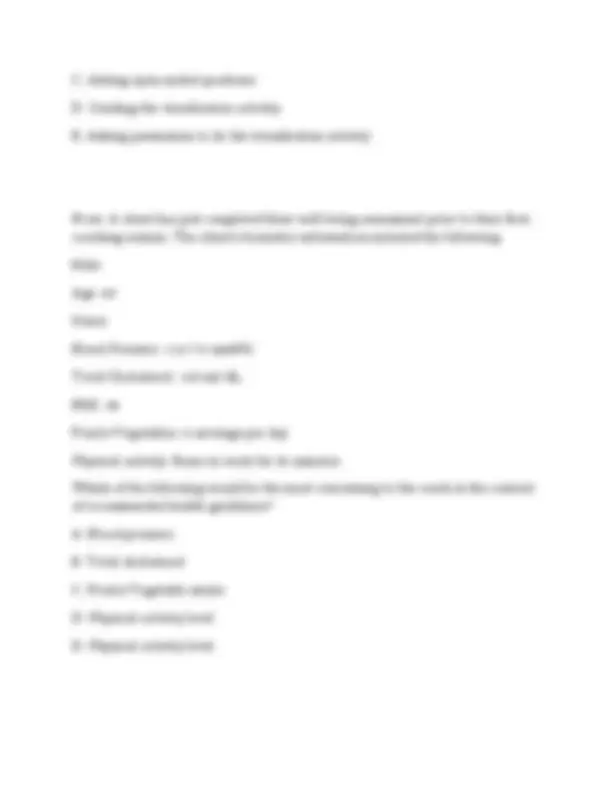
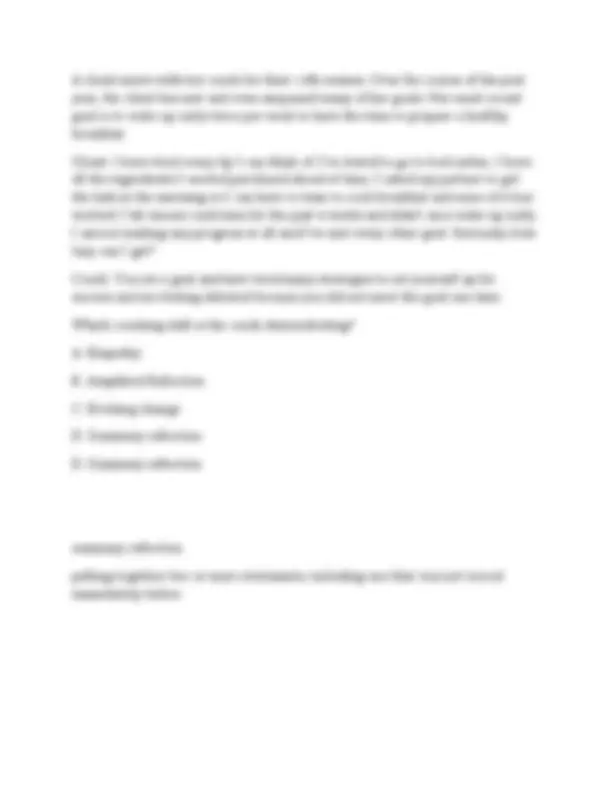
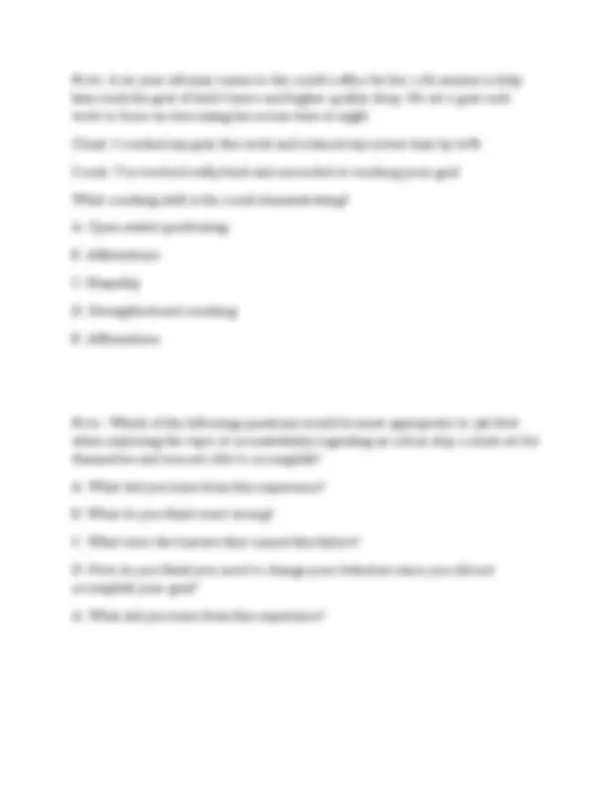
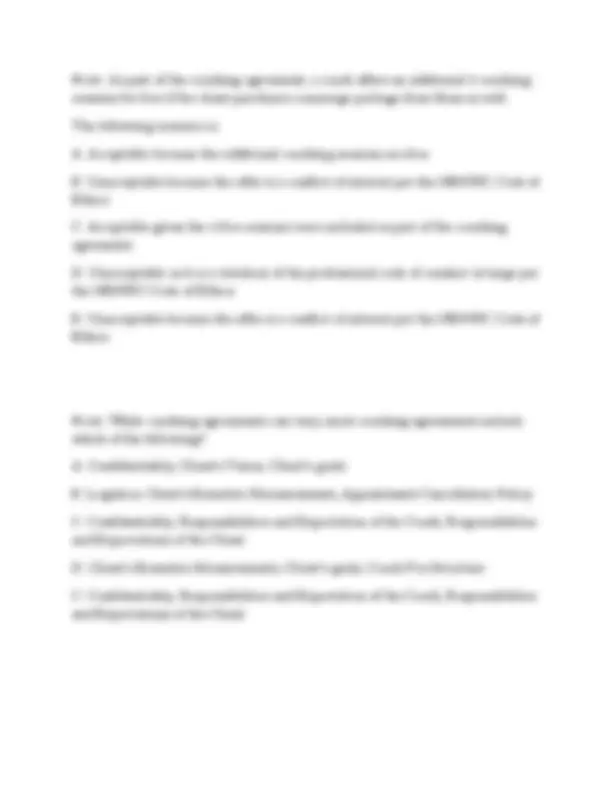
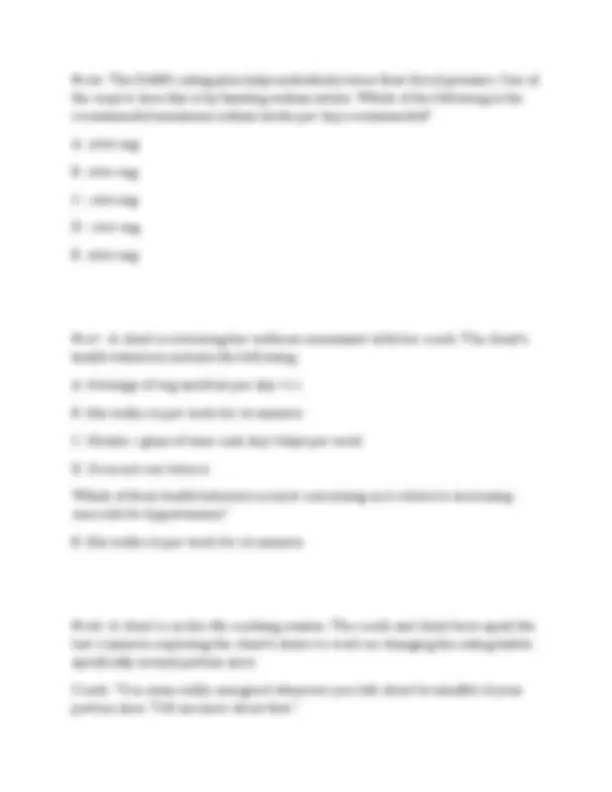
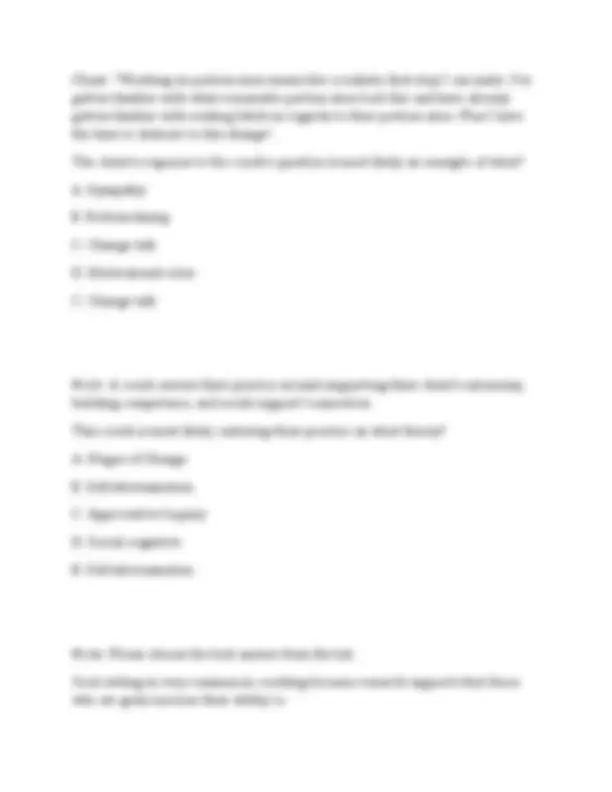
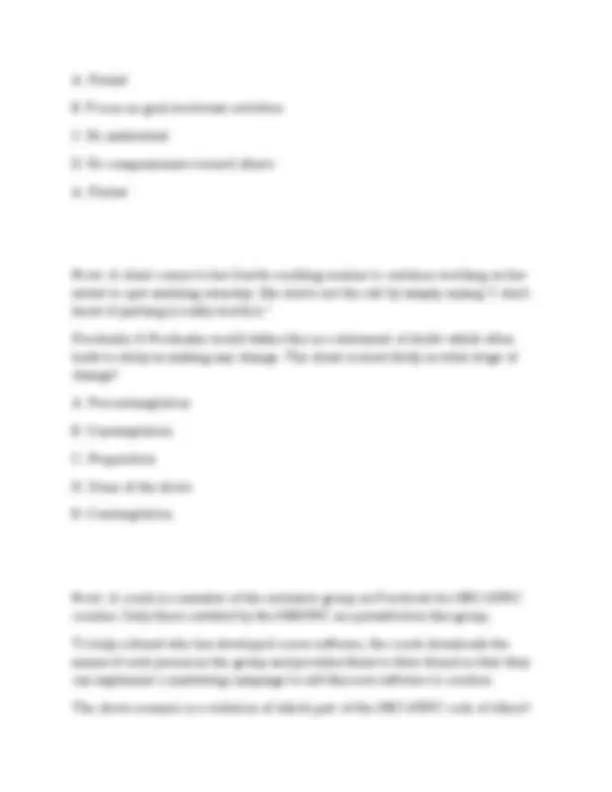
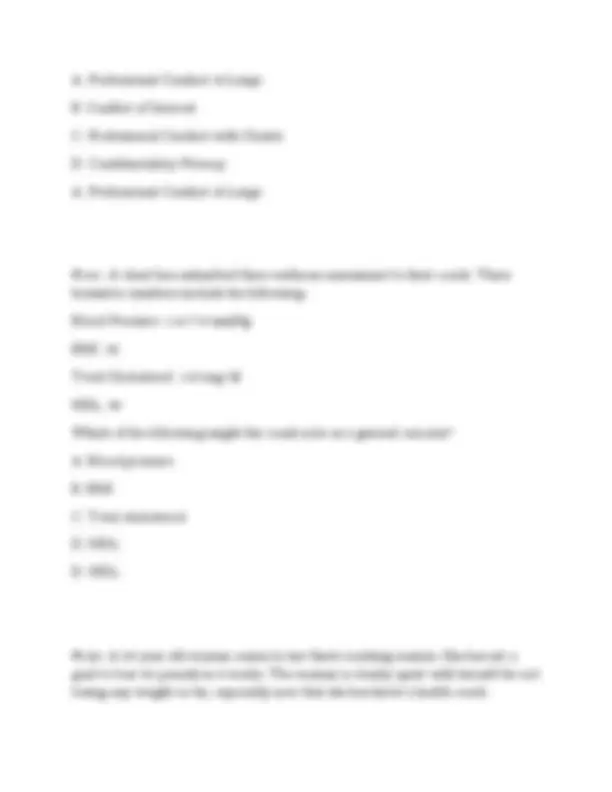
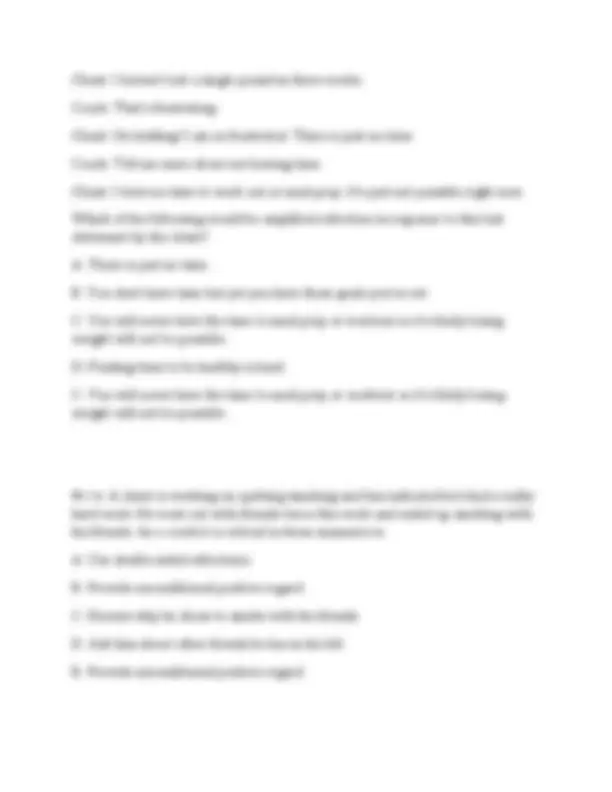

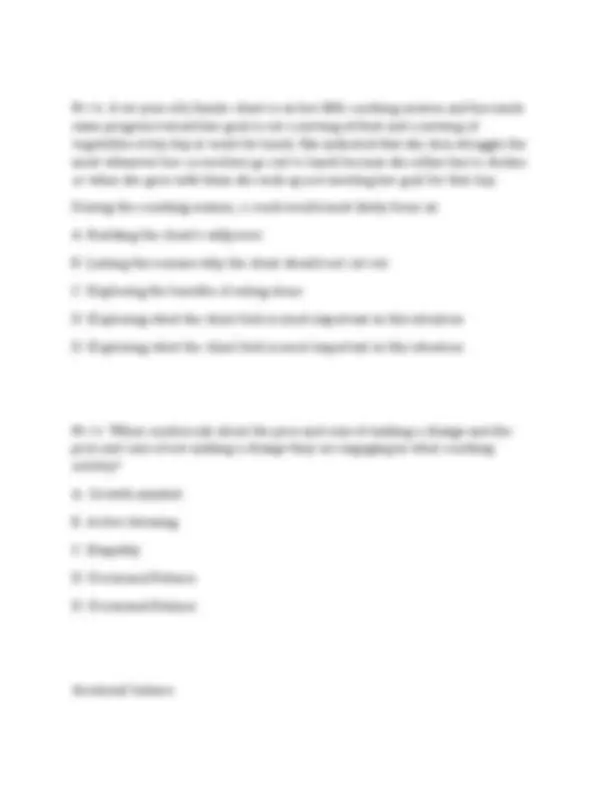
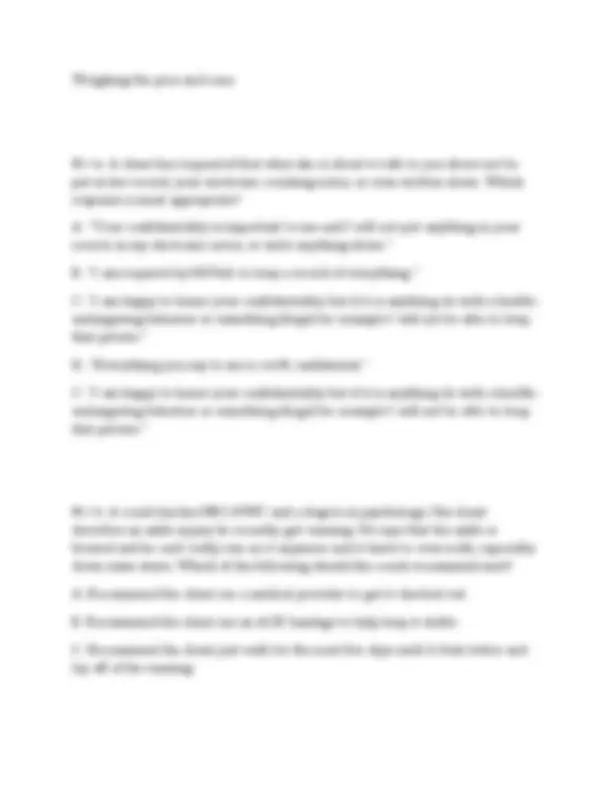
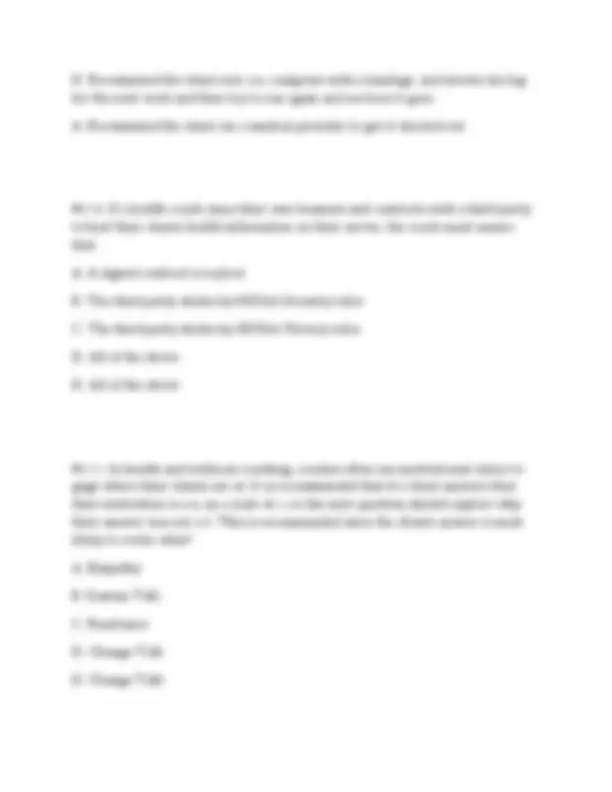
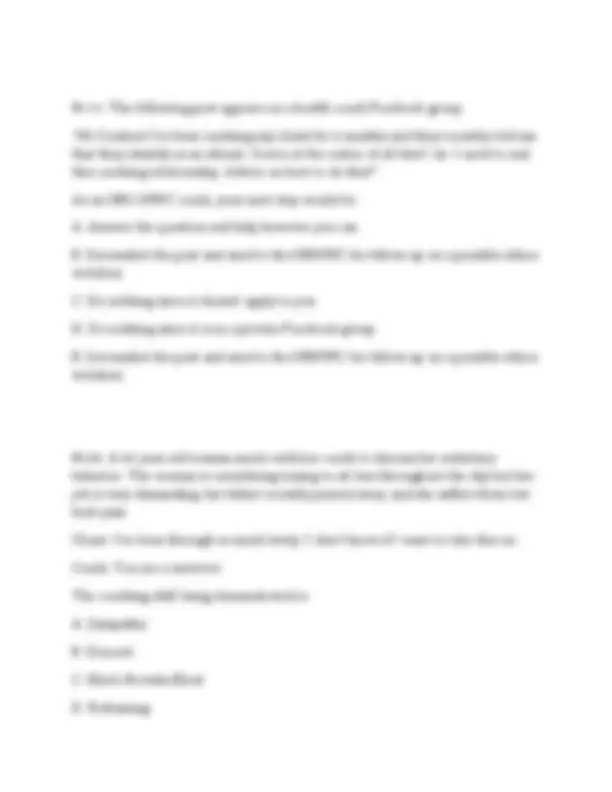
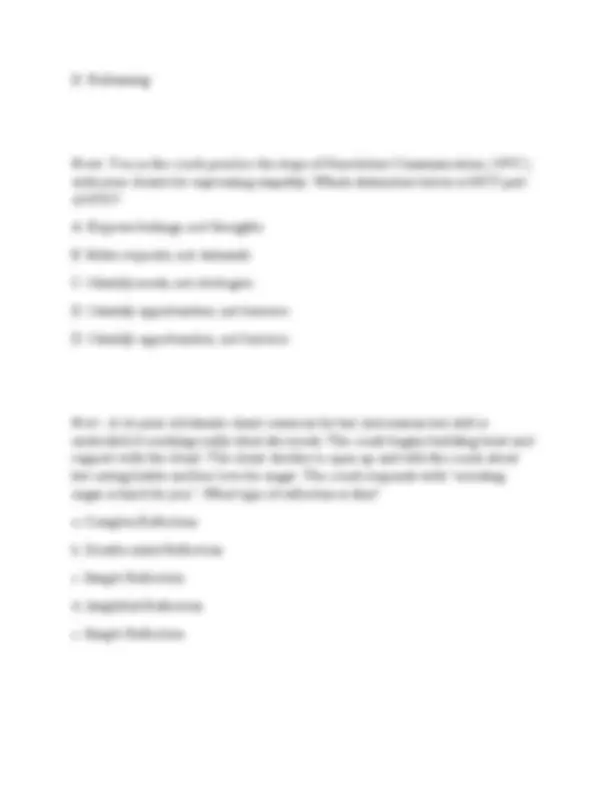
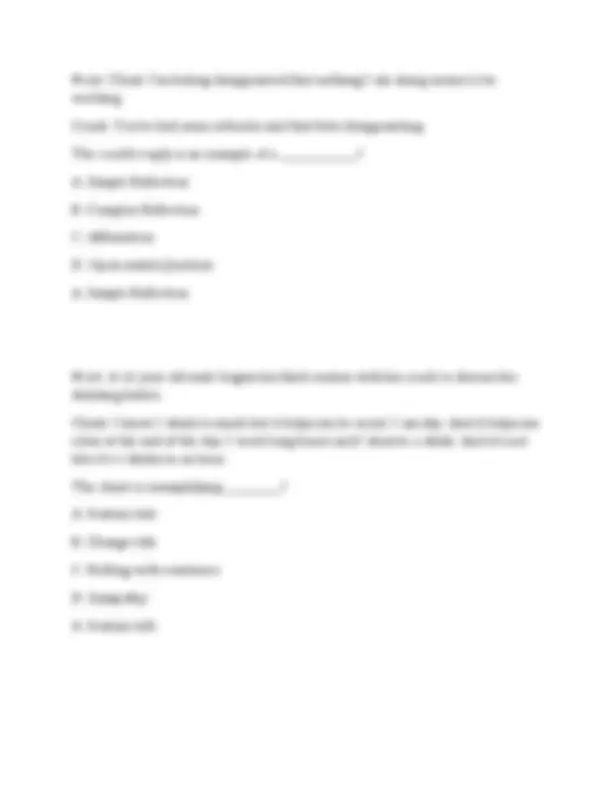
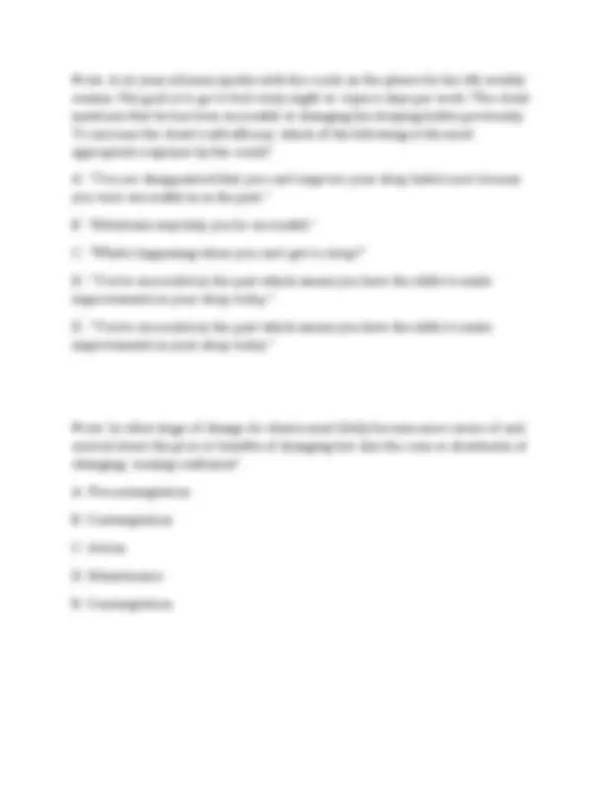
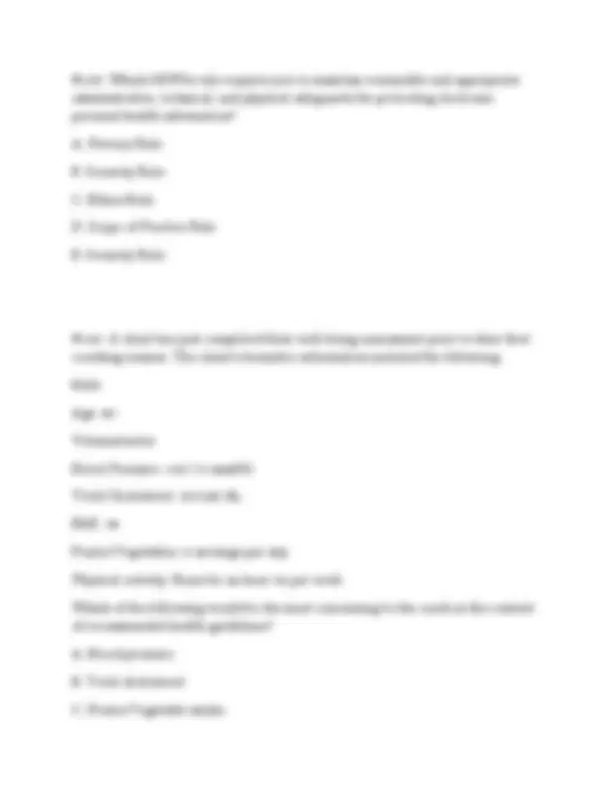
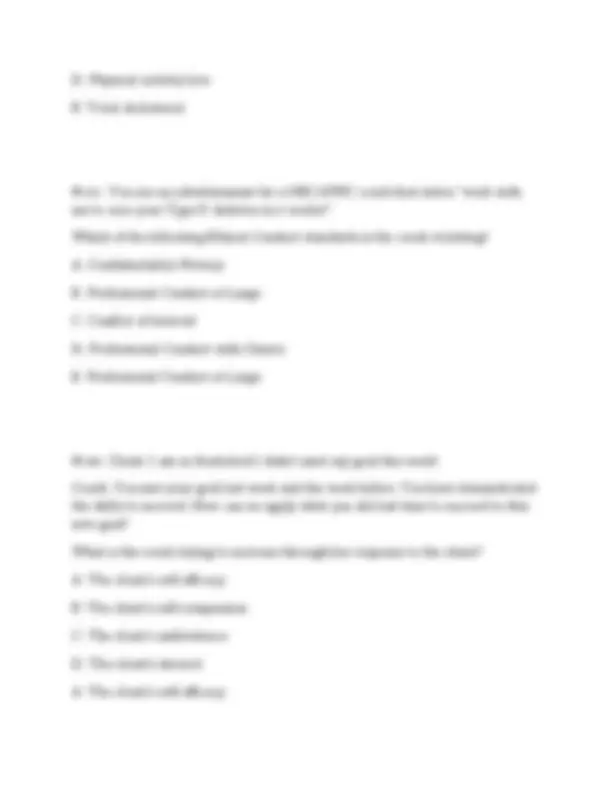
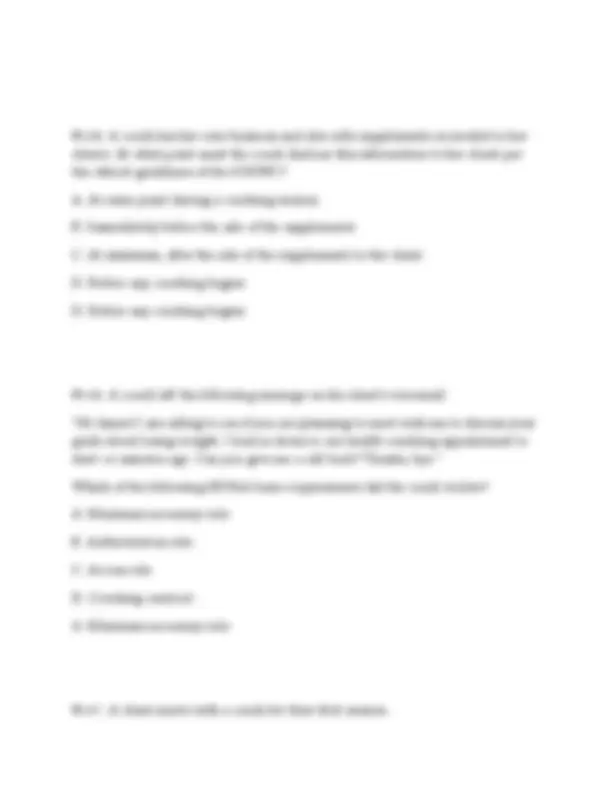
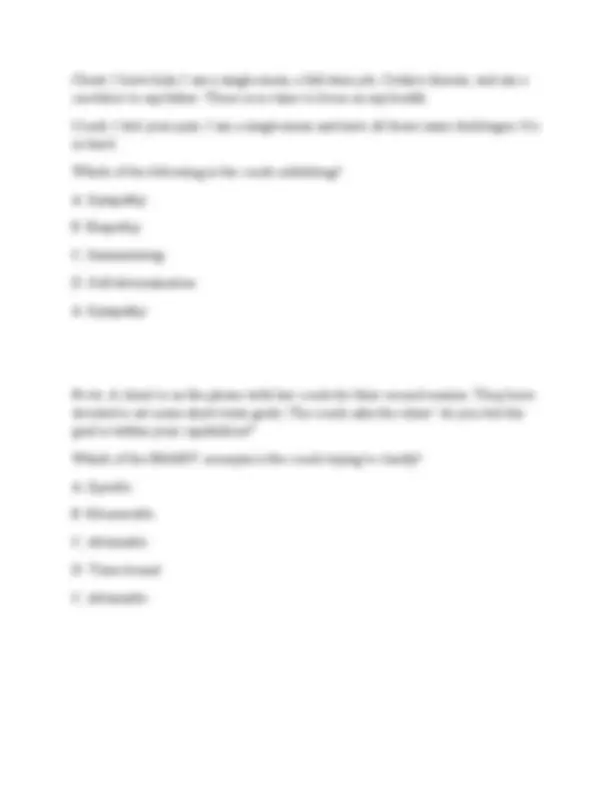
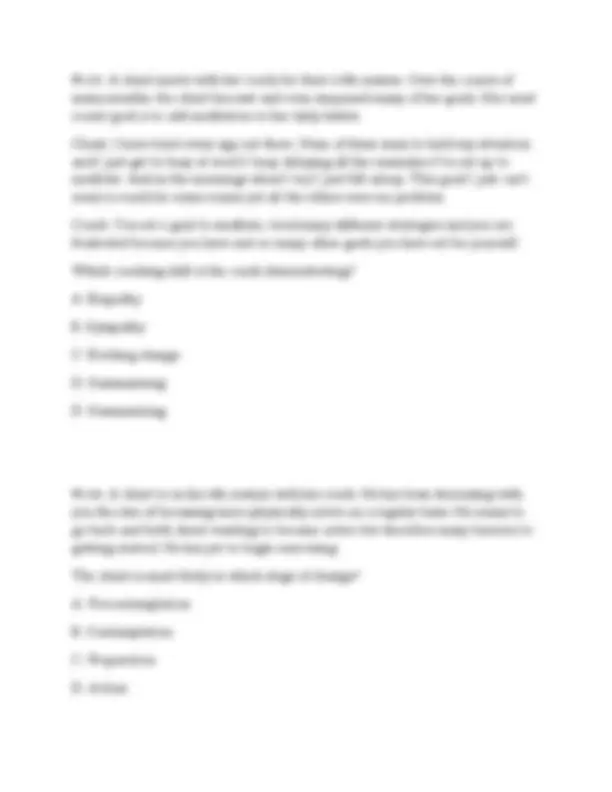
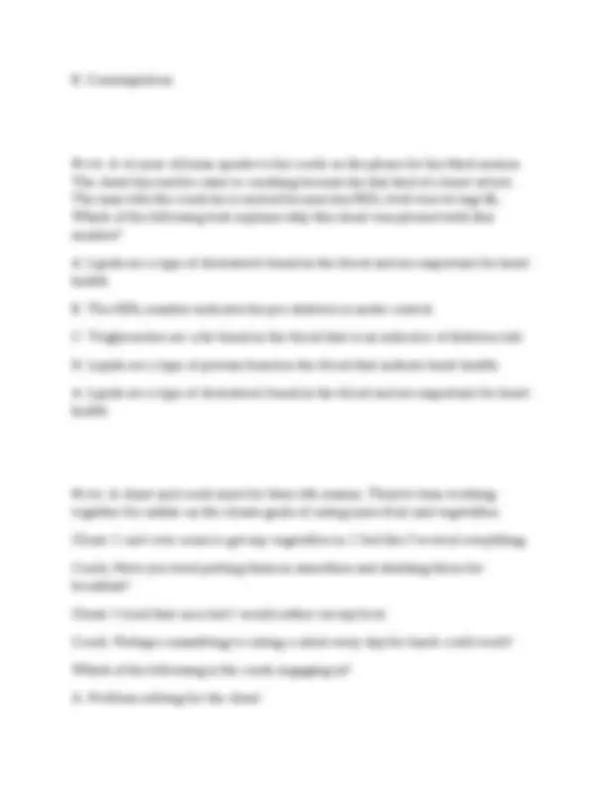
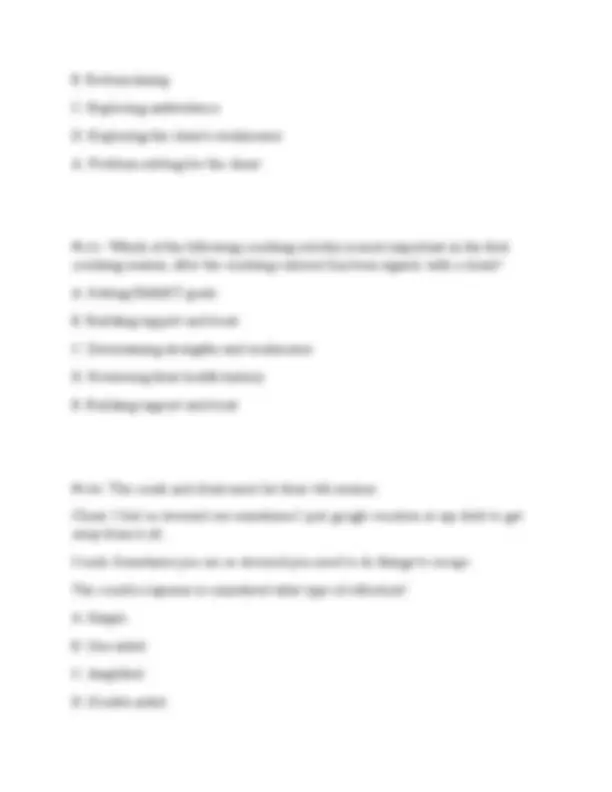
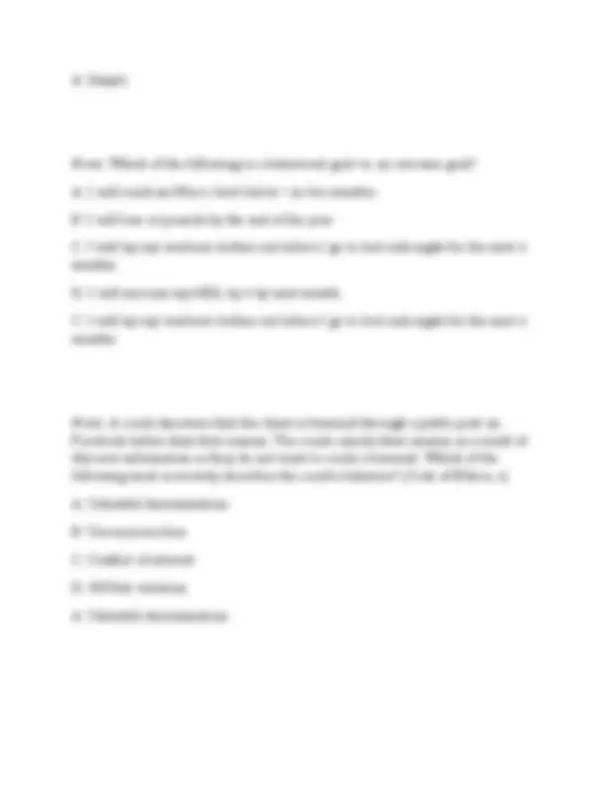
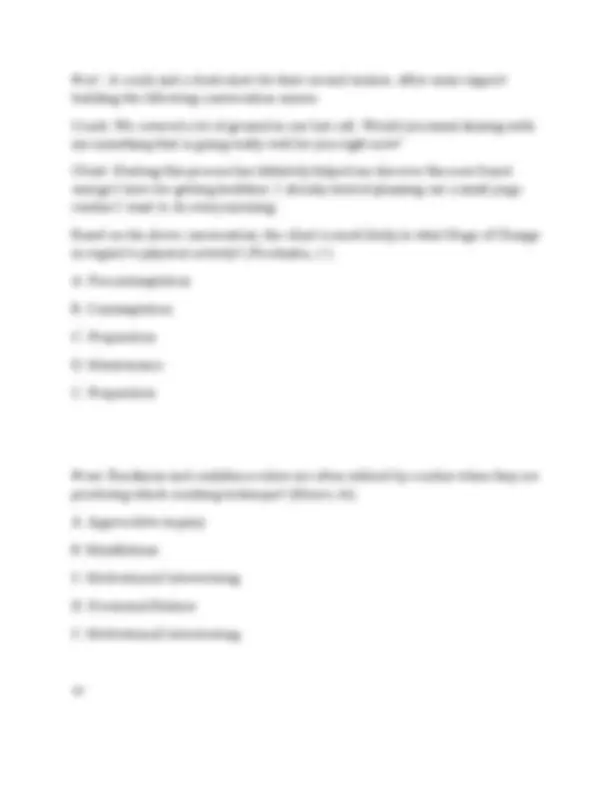
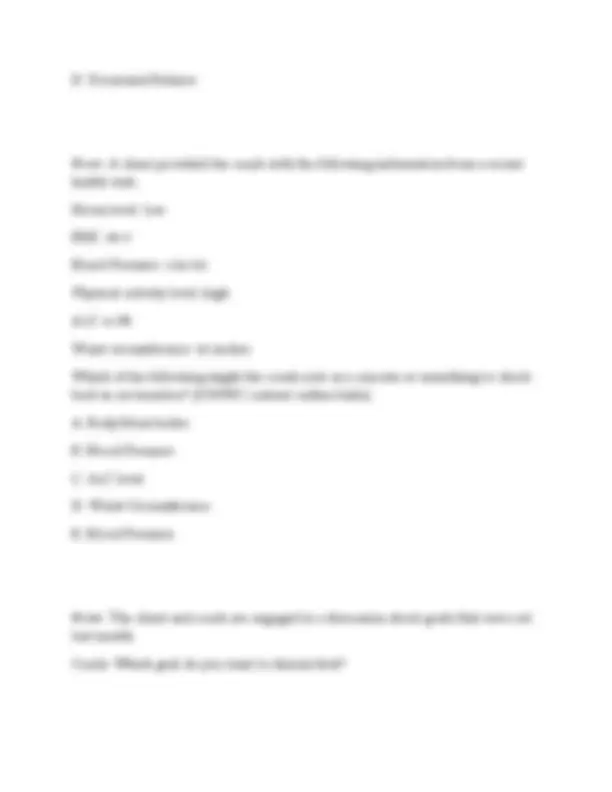
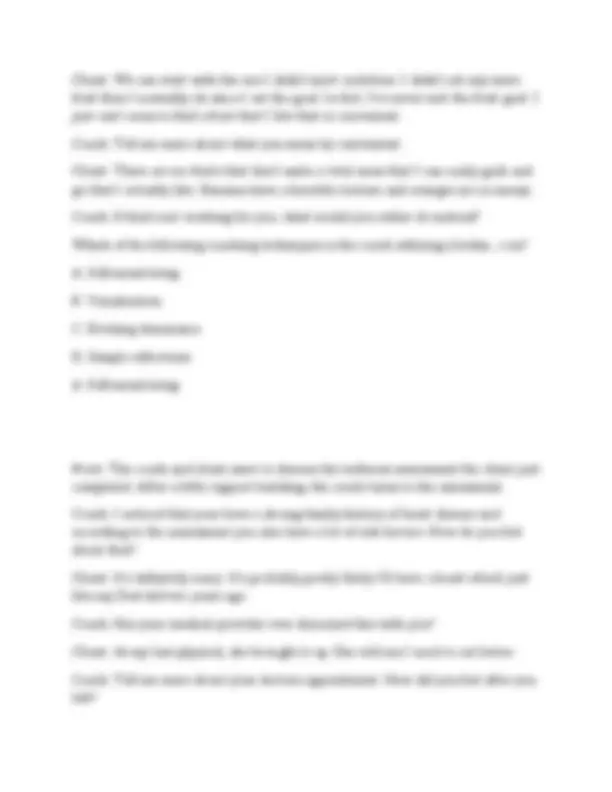
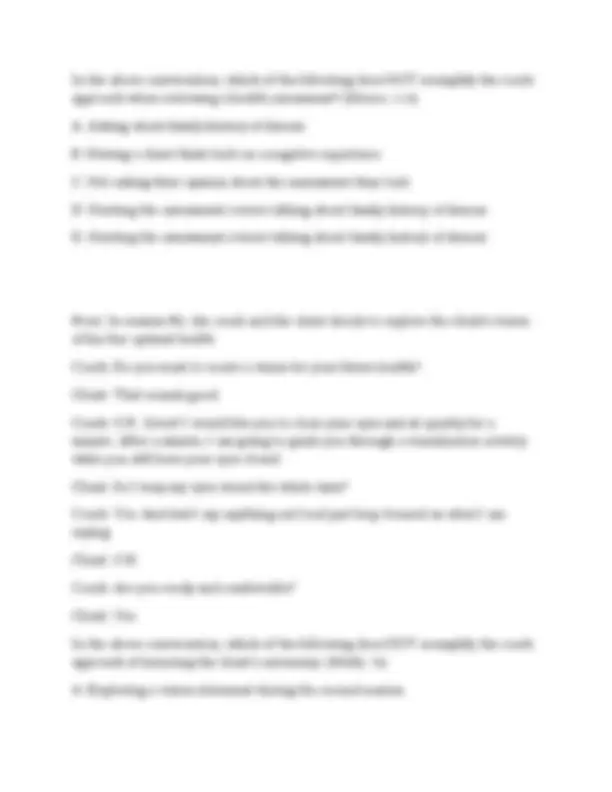
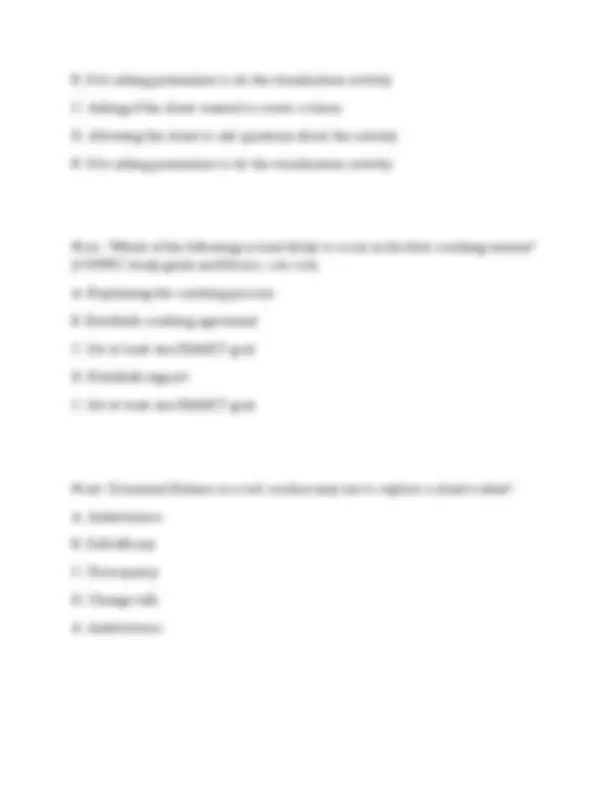
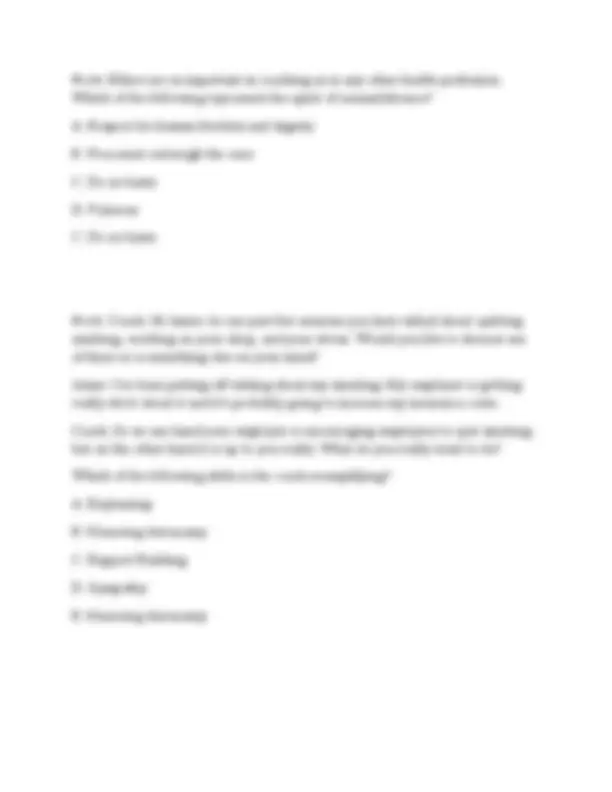
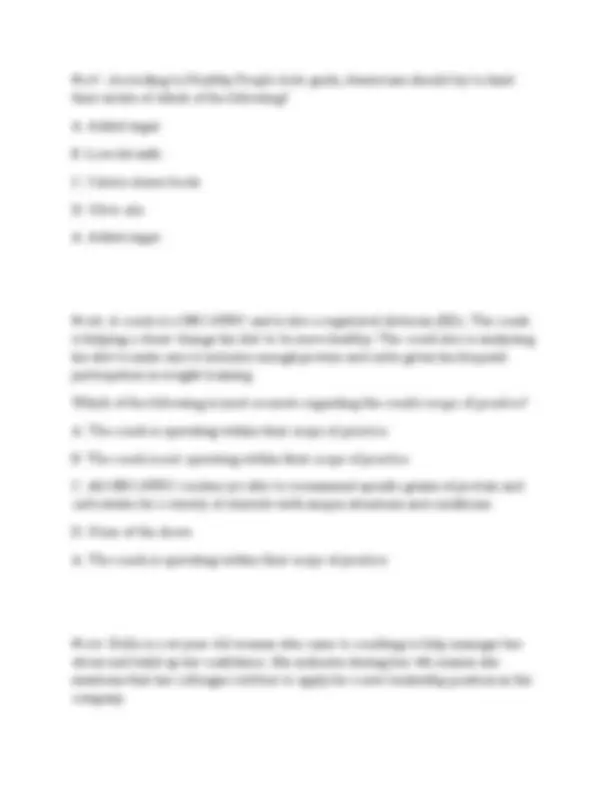
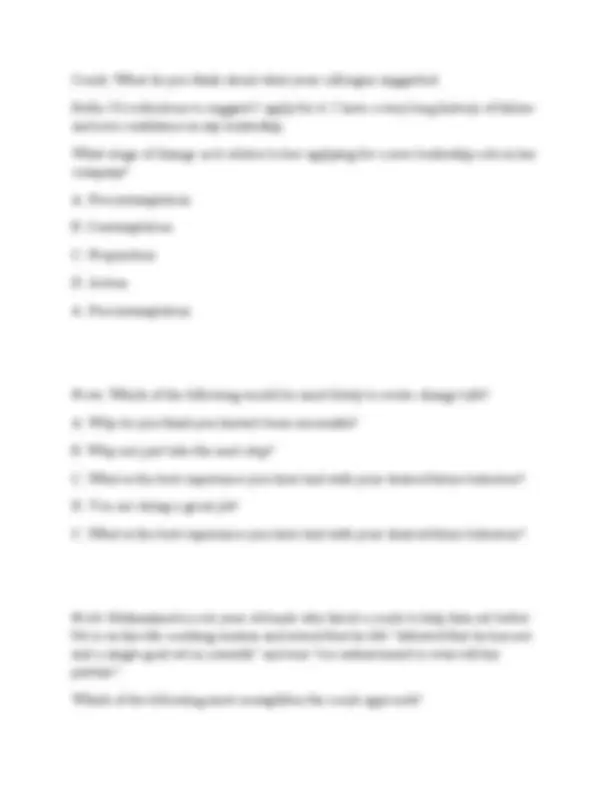
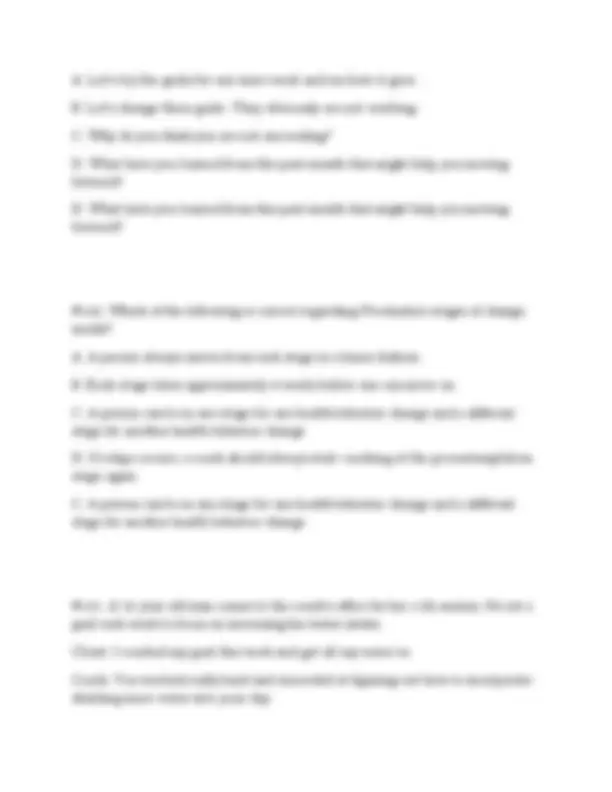
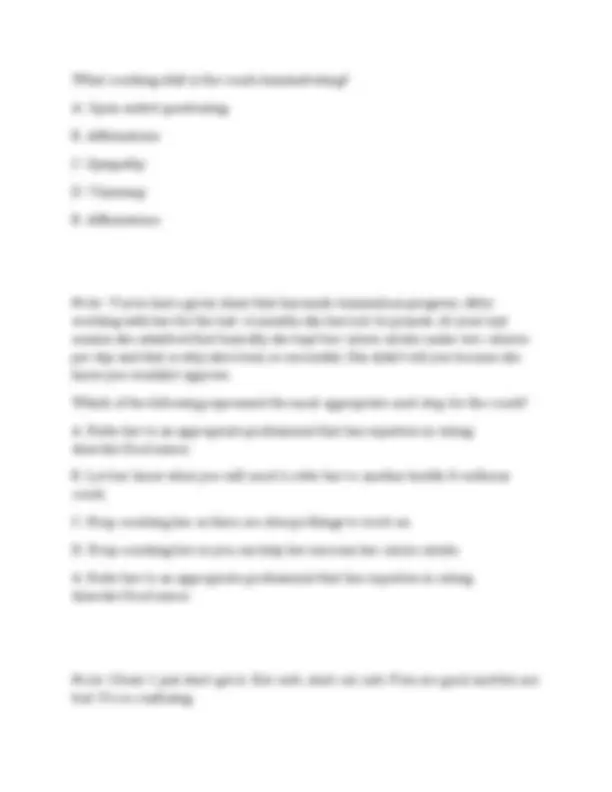
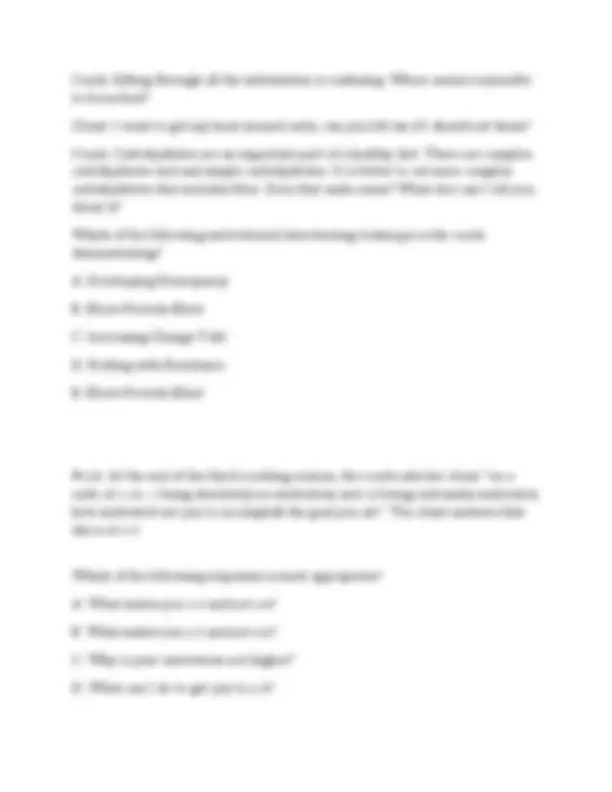
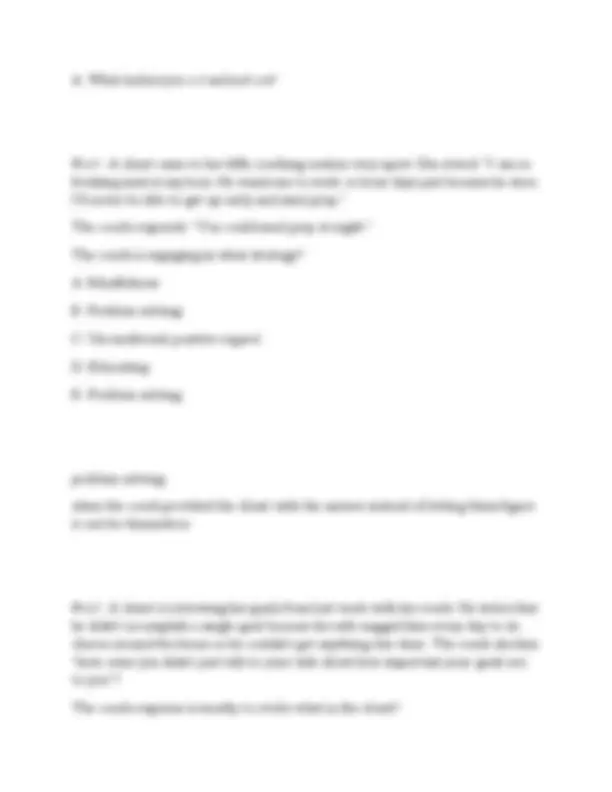
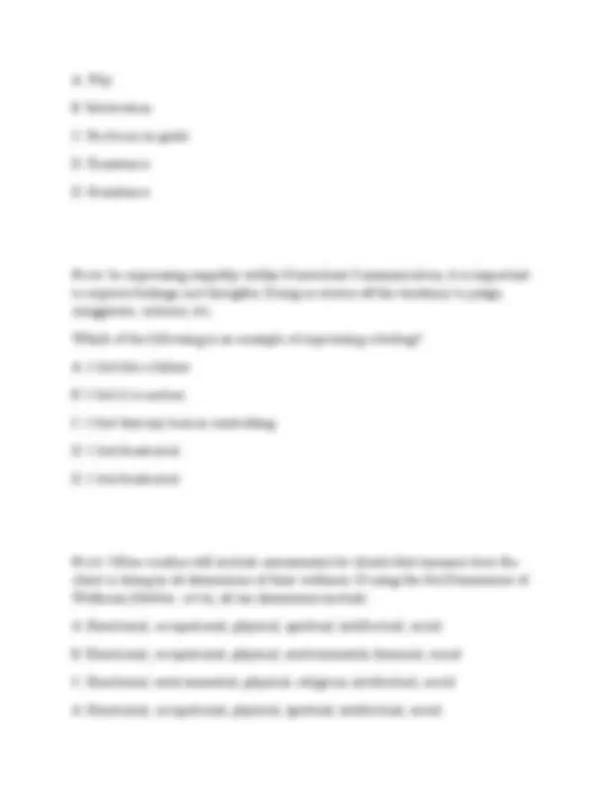
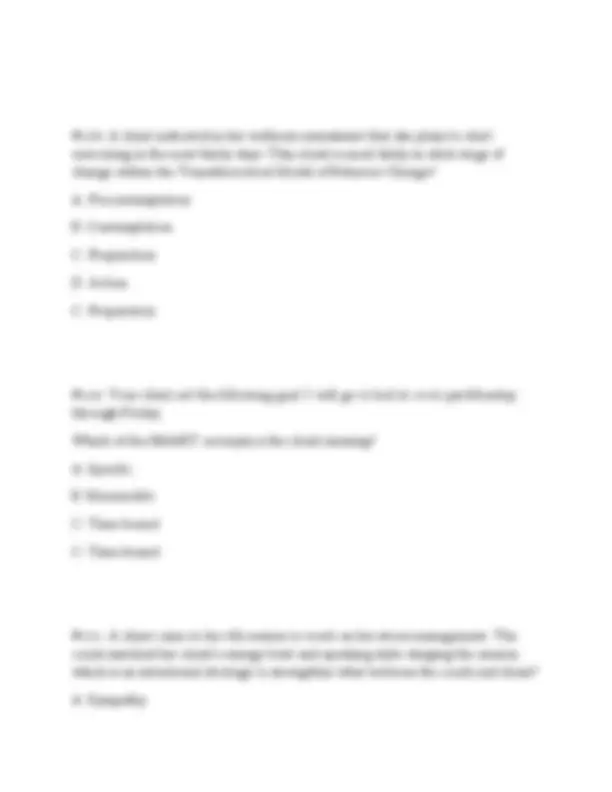
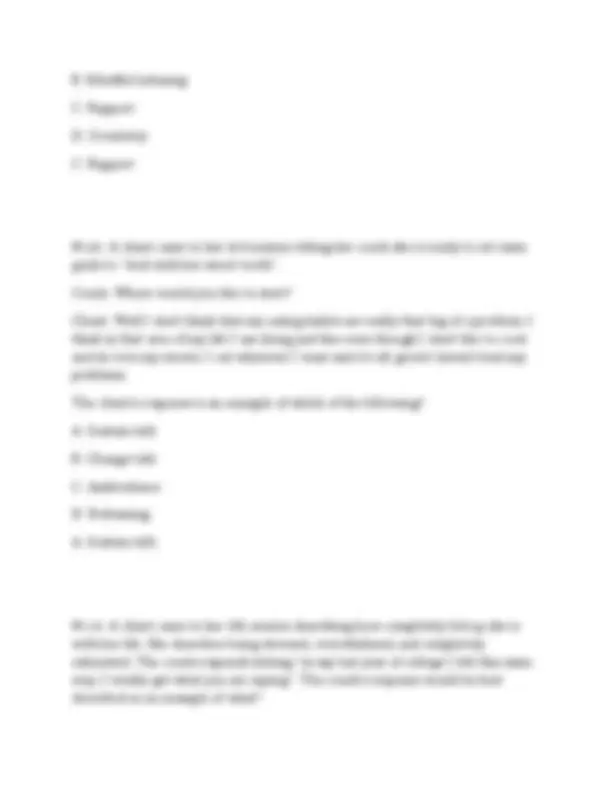
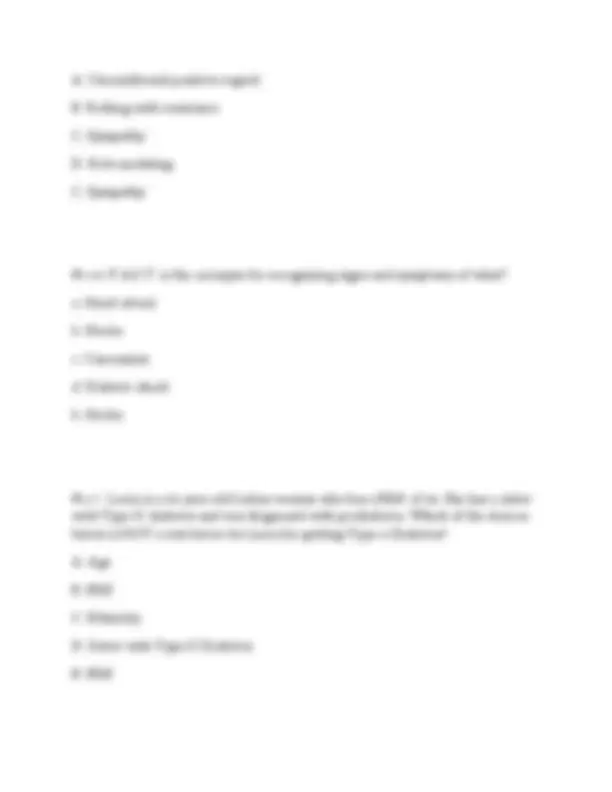
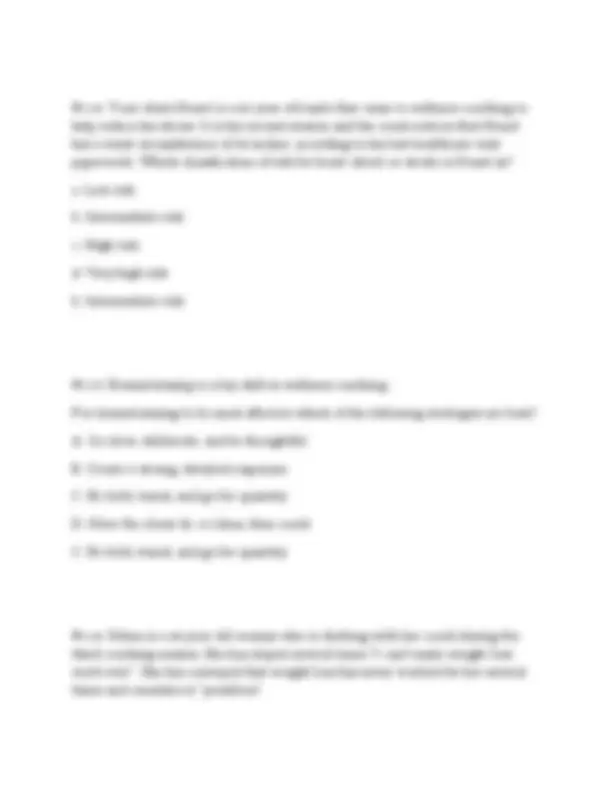
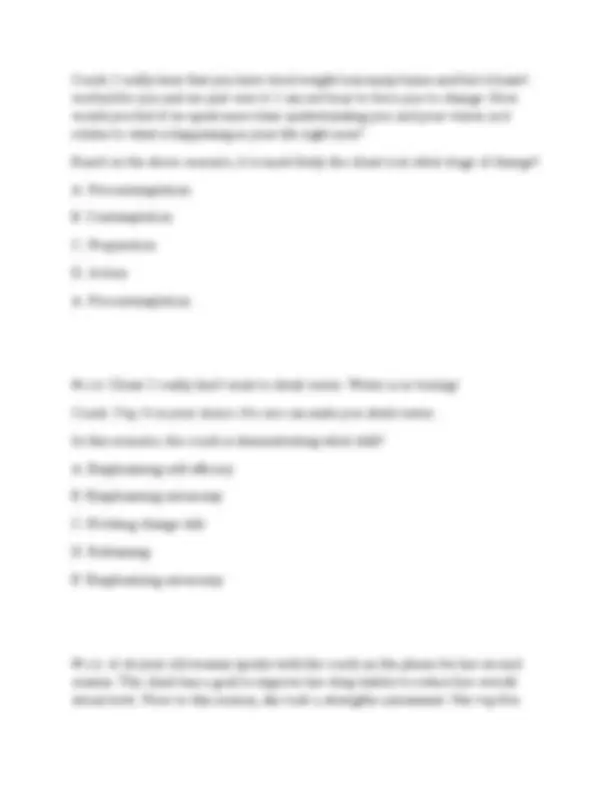
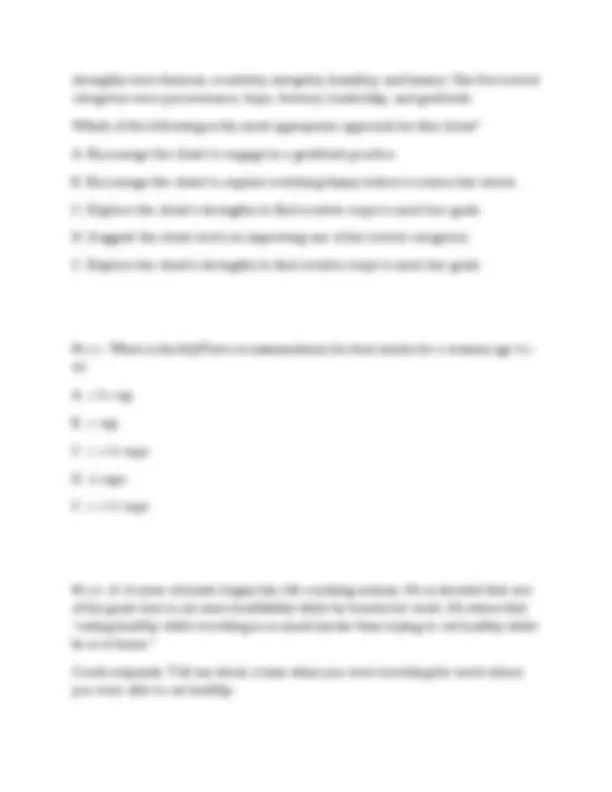
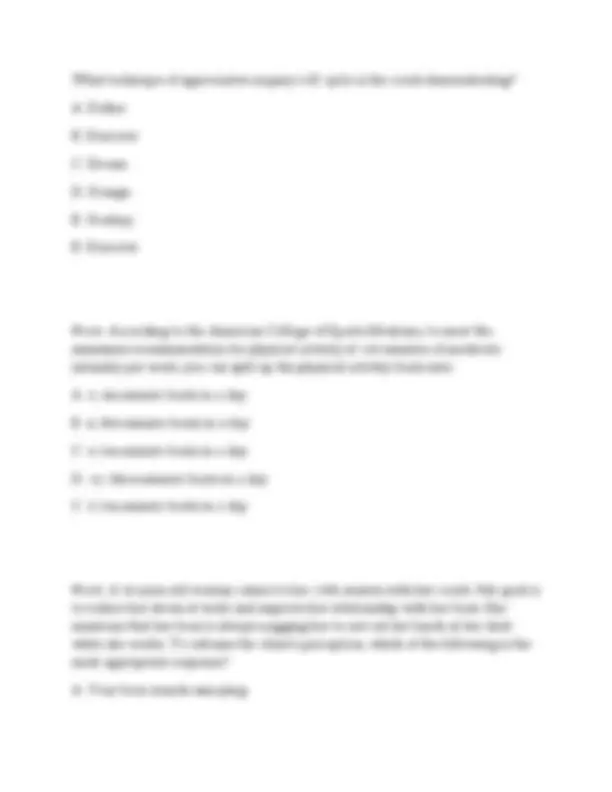
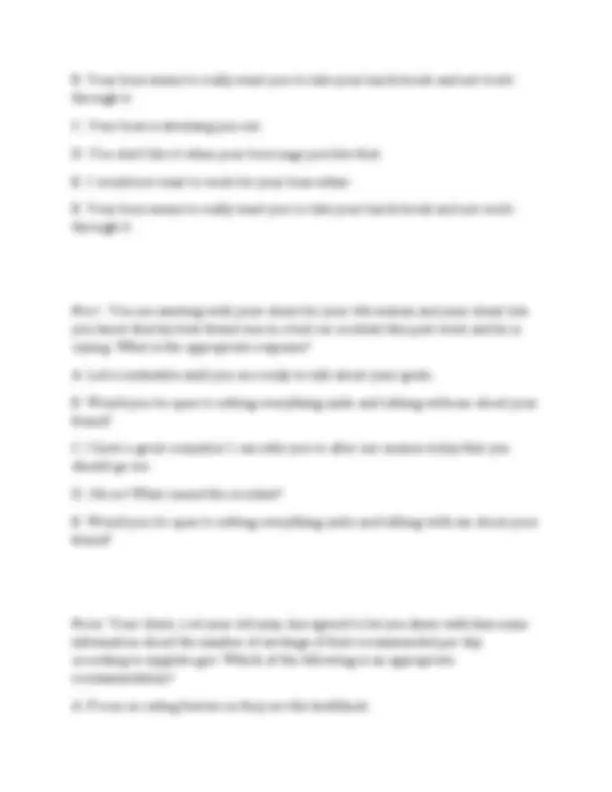
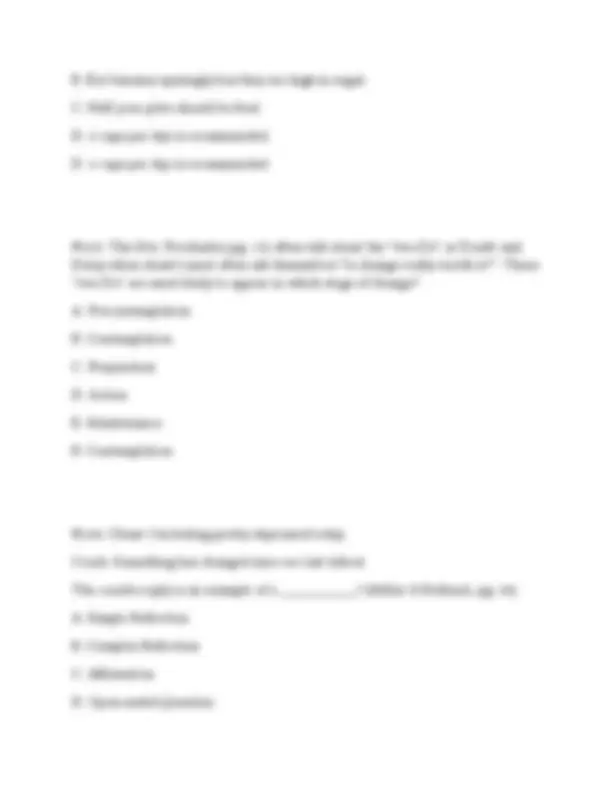
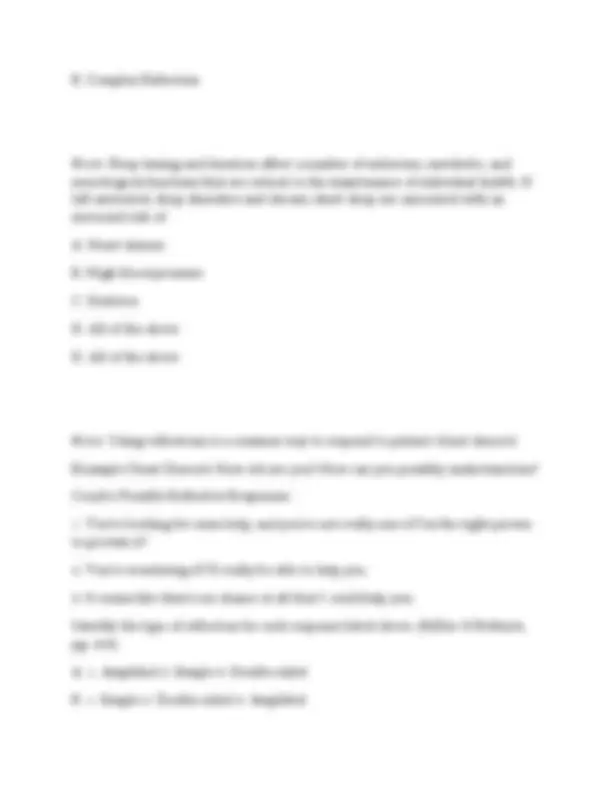
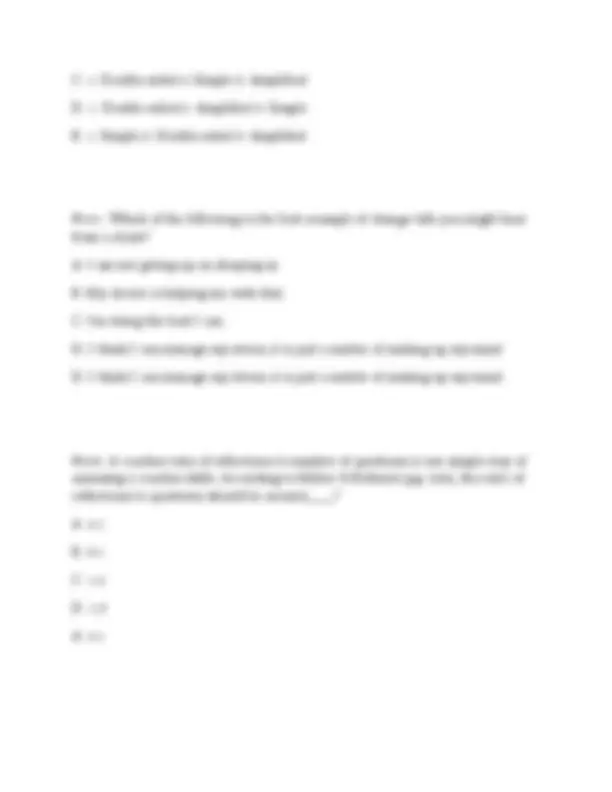
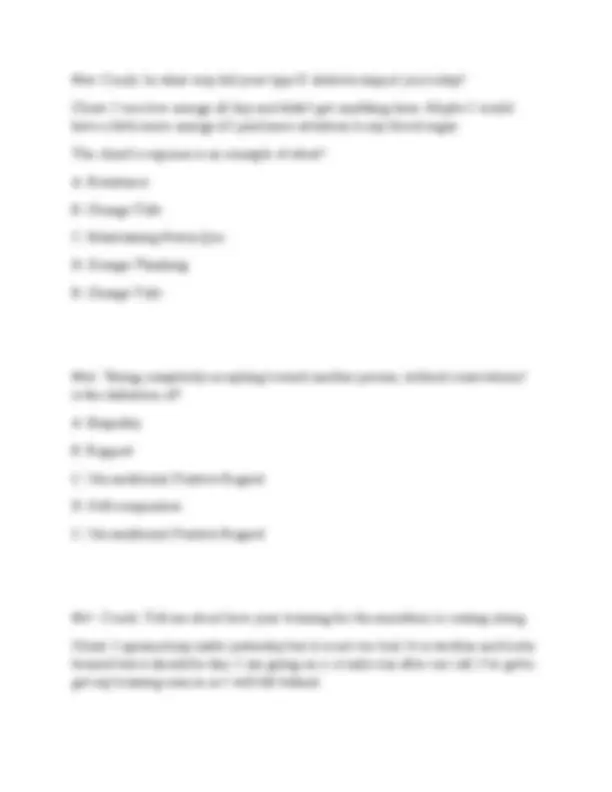
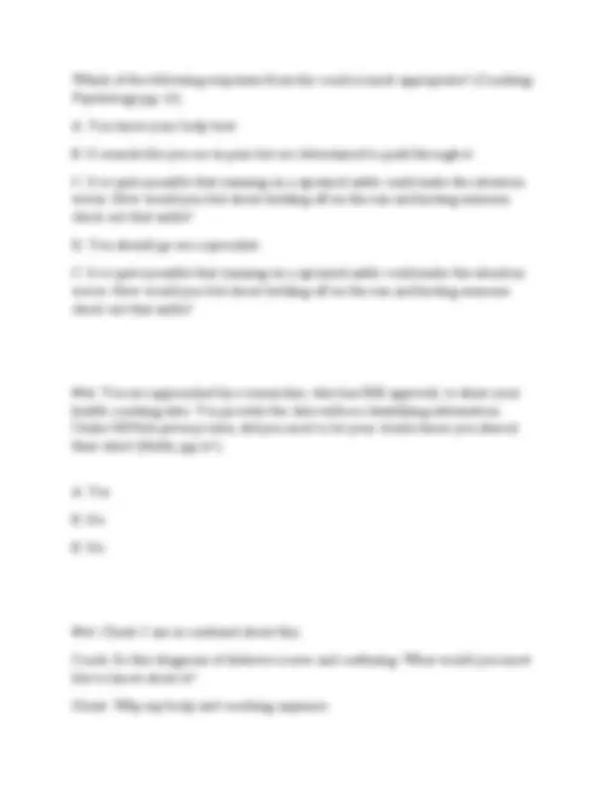
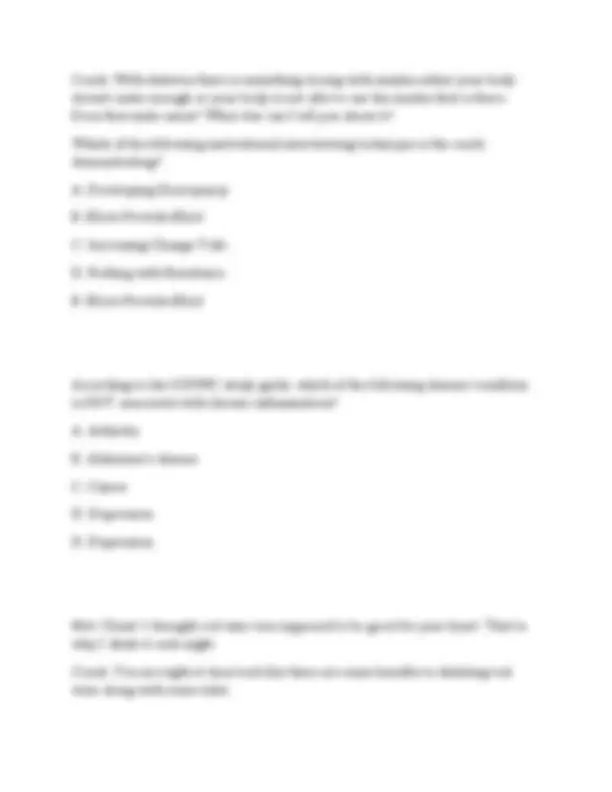
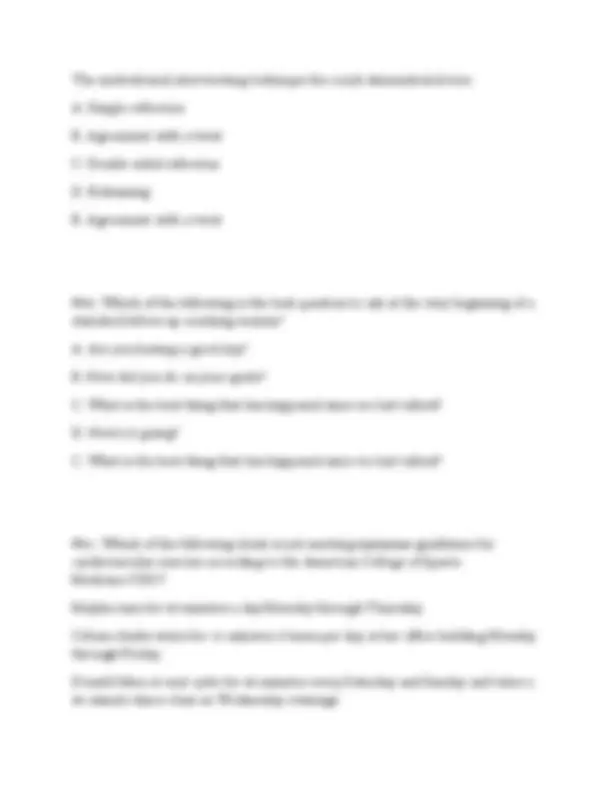
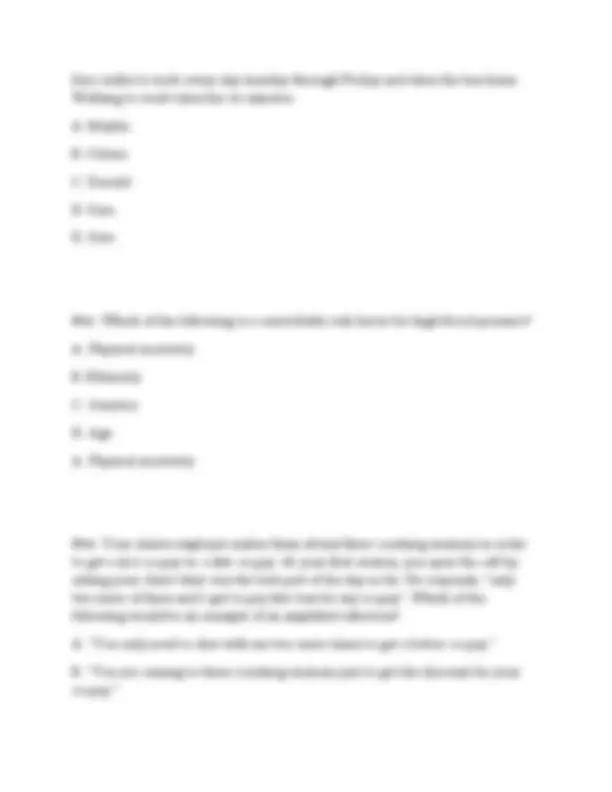
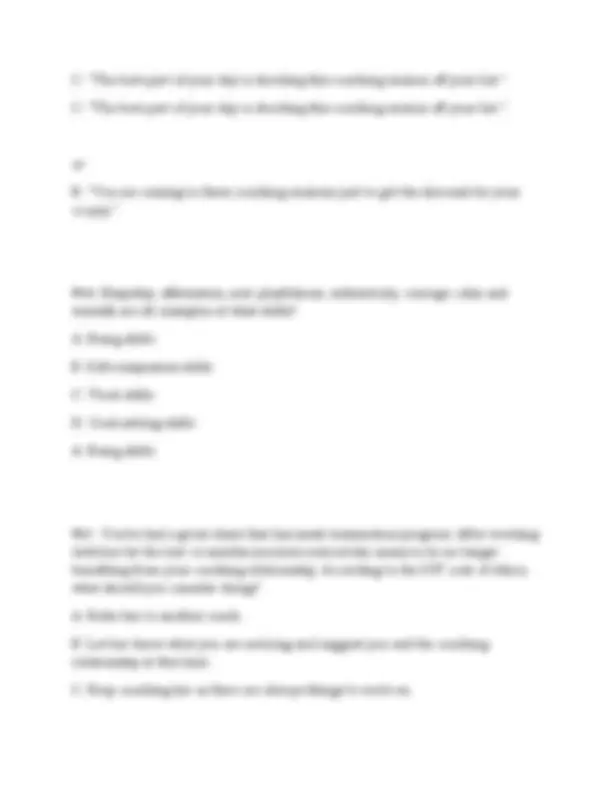
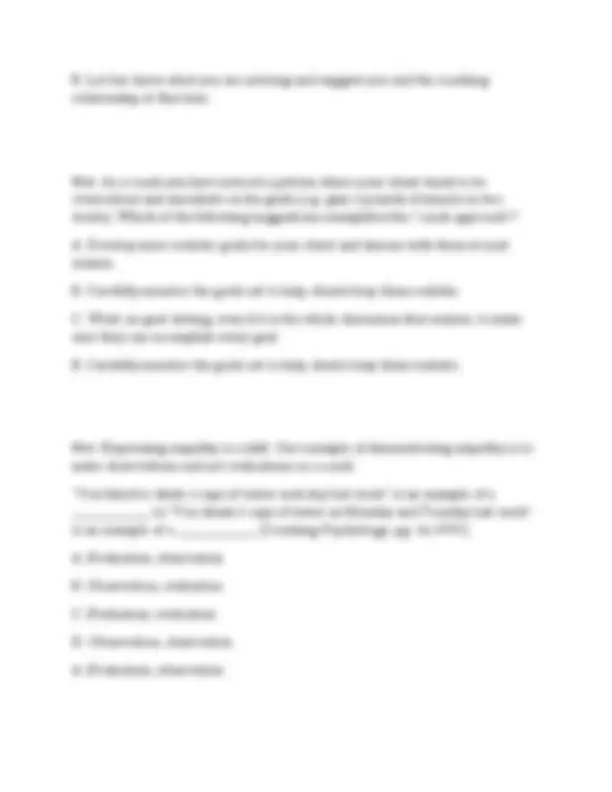
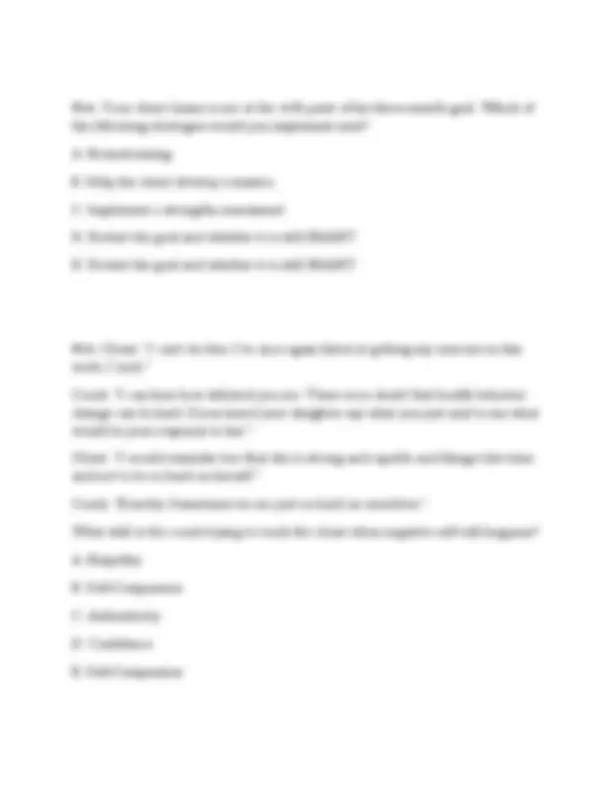
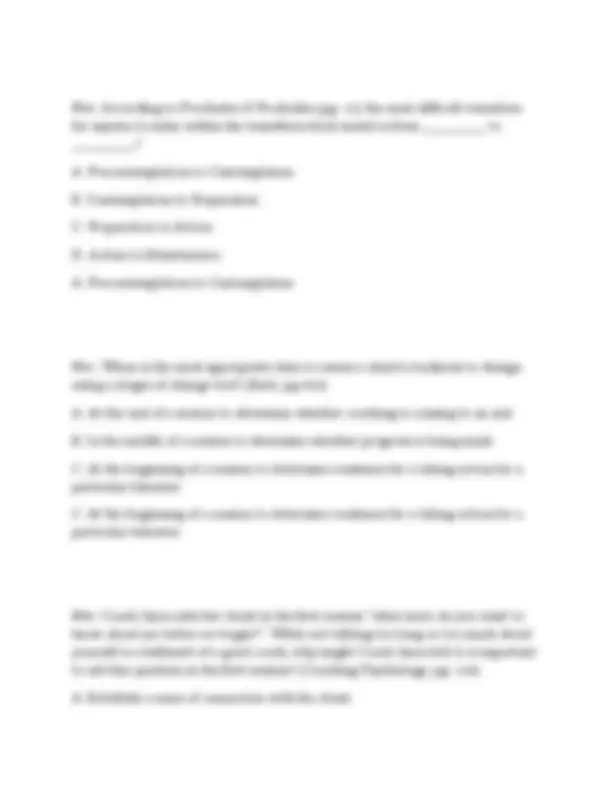
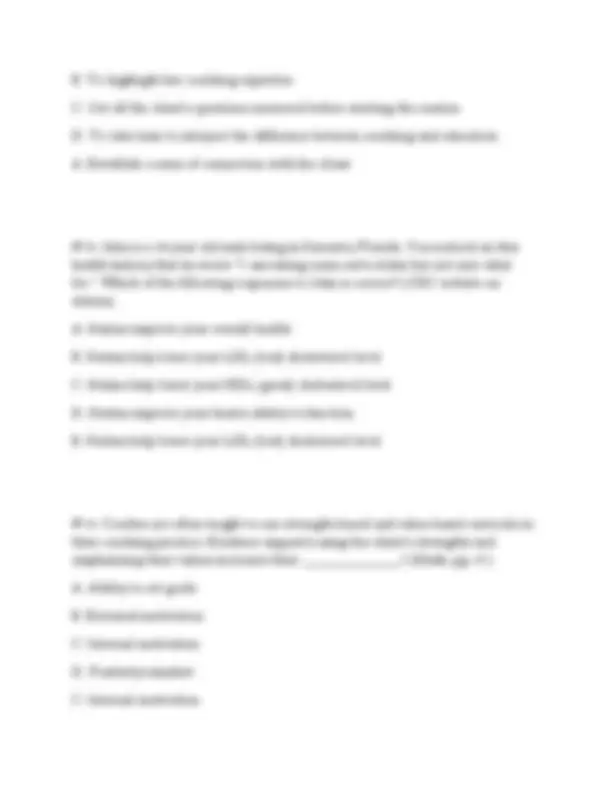

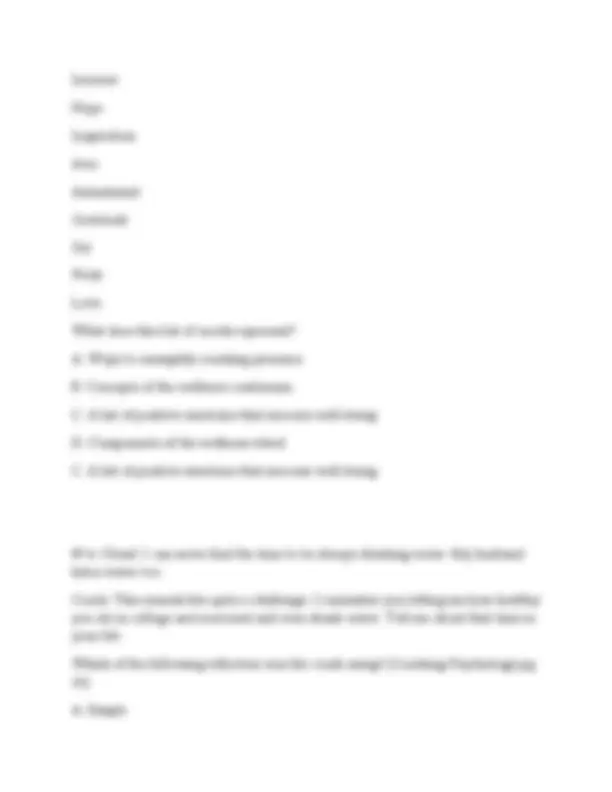
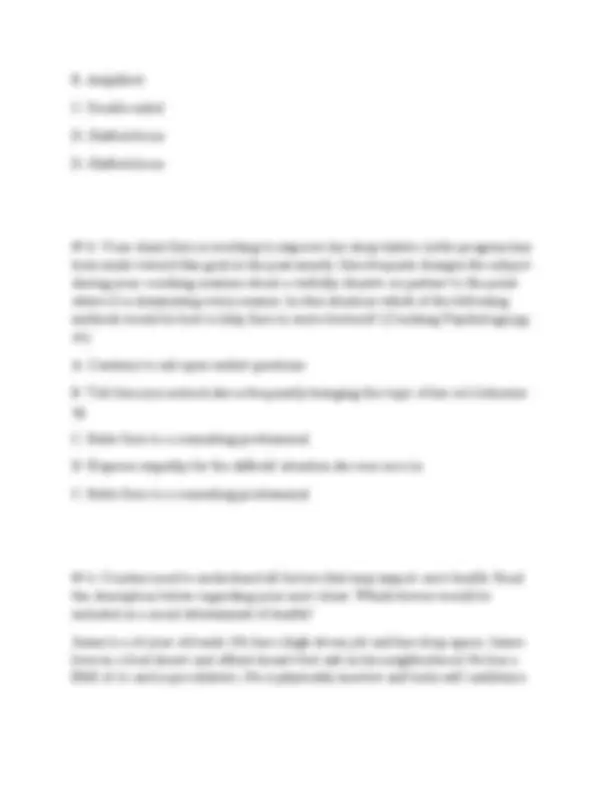


Study with the several resources on Docsity

Earn points by helping other students or get them with a premium plan


Prepare for your exams
Study with the several resources on Docsity

Earn points to download
Earn points by helping other students or get them with a premium plan
Community
Ask the community for help and clear up your study doubts
Discover the best universities in your country according to Docsity users
Free resources
Download our free guides on studying techniques, anxiety management strategies, and thesis advice from Docsity tutors
NBHWC EXAM 2025|REAL 300+QUESTIONS AND ANSWERS|ALREADY GRADED A+|NEW UPDATE SUMMER|100% VERIFIED
Typology: Exams
1 / 161

This page cannot be seen from the preview
Don't miss anything!





























































































A coach has his NBC-HWC and is an LPN. His client describes his diet and states that he knows he is getting too much saturated fat in his diet. He also says he eats too much sugar and lots of energy drinks. The client states that he also exercises very little and sits at his job all day. Which of the following is most appropriate response from the coach that is within their scope of practice? A. Recommend the client see a medical provider. B. Recommend the client try a ketogenic diet. C. Explore with the client potential changes in their diet and exercise habits they want to make. D. Discuss a personalized nutrition plan you can create for the client by doing a diet analysis. C. Explore with the client potential changes in their diet and exercise habits they want to make. A 59 year old man came to his fifth coaching session with his chronic pain coach. The coach asks his pain level on a scale of 1-10 to assess his current pain level. The client indicates his pain is higher than normal so they both agree to work through a process where the coach guides the client to focus on the warmth he feels in different parts of his body and then focus on relaxing that part of the body. This relaxation technique the coach is using is an example of which of the following techniques? A. Guides imagery B. Bio-feedback assisted relaxation
C. Progressive relaxation D. Autogenic training D. Autogenic training A coach was invited to give a presentation to a group of medical providers. The coach is an NBC-HWC and has a bachelor of science degree in health science. When asked what services the coach provides the coach responded that they are able to help patients change their behaviors through motivational interviewing, improve nutrition by focusing on macronutrient prescription, and improve fitness through high-intensity interval training prescription. Which of the following did the coach violate? A. HIPAA B. Code of Ethics C. Job Task Analyses D. Conflict of Interest B. Code of Ethics A client comes in for their 4th coaching session. The client is exploring cooking more rather than eating out to try and reach her goal of eating healthier. She also comments it would save her money but she really doesn't know how to cook either. The client is struggling with ambivalence around this issue. Which open-ended question would be best for a client in this position? A. What would have to happen that would signal you that it's time to start thinking about changing? B. What would be some pros and cons of making a change right now?
A client comes to her first coaching session as a referral from her medical provider. In the referral, her provider indicated some concerns. The client states "I am taking some sorta statin but not sure what for. My provider confuses me sometimes. Why do I need a statin?" Which of the following coach response is correct? A. Statins improve your mental health. B. Statins help lower your LDL cholesterol level. C. Statins help lower your HDL cholesterol level. D. Statins improve your hearts ability to function. B. Statins help lower your LDL cholesterol level. A 60-year old woman comes to her fifth coaching session. She has been working with a coach to improve managing her stress. Coach: On a scale of 1-10, 1 being no confidence and 10 being 100% confident, where would you say your level of confidence is at in regards to your goal of going to bed at 9 every night? Client: I would say 6. Which of the of the following questions would be the best coach response? A. What might you do to increase that number? B. What strengths will you use to reach this goal? C. What made you chose a 6 and not a 5? D. What will it take to get you to a 7?
C. What made you chose a 6 and not a 5? A 52 year-old man is on his fifth coaching session and has been working with a coach to manage his chronic pain. He has good days and bad days but recently he has noticed his number of bad days has increased. This is motivating him to explore alternative options for managing his pain addition to all the other things he's been doing. Coach: How is your chronic pain impacting you in this moment? Client: It's a really bad day. Coach: Would you describe for me what a really bad day is like for you? Client: A bad day is realizing I will never not be in pain. It's accepting that the pain will likely increase as I get older and there's not a lot I can do about it. It is what it is. A bad day. The client's response to the coach's question about what a really bad day is like for the client is an example of what? A. Change Talk B. Sustain Talk C. Discord D. Sympathy B. Sustain Talk A 45-year old woman comes to her first coaching session to discuss her desire to gain more energy and be less stressed overall. She wasn't aware that her coach Sam was a man. She looks upset and states that "No man can possibly understand what women go through. I am going to need a female coach."
A client arrives for his tenth session and is working on stress management. He set a goal to use stress management techniques during his work day as that is when his stress is highest. Client: I just don't see how I can make this a reality. There are deadlines I have that can't be moved for any reason and there is only so much time in the day. How is stress management even possible? Coach: So you are stuck. There's absolutely nothing you can do about it. Which skill is the coach demonstrating? A. Double-sided reflection B. Simple reflection C. Sympathy D. Amplified reflection D. Amplified reflection Amplified Reflection A technique that exaggerates what a client has said with the hope that the client will present the other side of ambivalence A client is working on becoming a vegetarian and stayed she had "the worst week ever". She went out with friends twice this week and ended up eating out for dinner with them and the meals included chicken and red meat. She stated that she is really feeling horrible about not meeting any goals this week and feels like maybe being vegetarian is not for her. As a coach it is critical in these moments to:
A. Use double-sided reflections B. Provide unconditional positive regard C. Explore why she chose to eat meat D. Ask her about other friends she may consider eating out with B. Provide unconditional positive regard A coach is hosting a group coaching session and has 8 clients in the room. The coach notices another client came in late to the room. The coach states to the late participant: "Thank you for joining us. Can you stay on after this group session to reschedule your last appointment you missed so we can move forward on your goal to lose weight by your daughter's wedding?" Which of the following HIPAA basic requirements did Coach violate? A. Minimum Necessary Rule B. Impermissible Uses Rule C. Access Rule D. Professional Code of Conduct A. Minimum Necessary Rule A 32-year old man comes to his coach for their 4th session. The man decided to try coaching to get some help with trying to quit eating so much sugar. He has a self-proclaimed "sweet tooth". Client: Whenever I try to give up sugar I seem to crave it more. Coach: You really notice when you focus on sugar you want even more sugar. Client: Yeah. I think I need to just cut back a little at a time.
High stress job Pre-diabetic The client has three key risk factors for heart disease. These three key risk factors are: A. High BMI, high blood pressure, pre-diabetes B. MyPlate diet, high BMI, high total cholesterol C. High blood pressure, high cholesterol, current smoker D. Current smoker, high BMI, high blood pressure C. High blood pressure, high cholesterol, current smoker A 55-year old man is working with his coach on improving his intake of healthy fats, fruits and vegetables, and reducing the amount of alcohol he consumes. The coach decided to use the decisions balance took to help the client. What is most likely the reason for choosing the decisional balance tool? A. Client is showing some discord B. Client needs some sympathy C. Client is demonstrating change talk D. Client is ambivalent about making the change D. Client is ambivalent about making the change There is a wide variation of opioid prescription rates across states. Studies suggest that regional variation in use of prescription opioids CANNOT be explained by: A. health status of the population
B. access to healthcare C. population size D. number of surgeries per capita A. health status of the population #244: Which of the following is best for assessing visceral fat? A. Skin calipers B. BMI C. Waist circumference D. Waist-to-hip ratio C. Waist circumference Coaches are often taught to allow for a longer than normal silence after asking a question to a client. This is sometimes referred to as the pregnant pause. Which of the following is the main reason why the pregnant pause is recommended? A. It gives the coach time to take a small break B. It gives the client an opportunity to process the question and connect to the answer at a deeper level C. It gives the coach time to decide on the next evocative question to ask D. It helps the client address their sustain talk B. It gives the client an opportunity to process the question and connect to the answer at a deeper level
Blood Pressure 112/ BMI 24. Diet low in saturated fat 1 alcoholic drink per day Walks 30 minutes 2x per week Which of those listed above may be of concern for increasing their risk for chronic disease in general? A. Blood Pressure B. BMI C. Diet D. Physical activity E. Alcohol use D. Physical activity A client comes to their 5th session and has been working on eating healthier and getting more sleep. During this session, the client is focused on strategies for improving their vegetable intake. Coach: What went well for you this week regarding your goal of increasing your vegetable intake? Client: I got vegetables in for lunch 4 times last week. It's so hard to plan. It seems like without planning vegetables don't naturally happen. Coach: You got vegetables in your lunch 4 times last week and are recognizing it takes effort. What type of reflection did the coach use?
A. Simple B. Double-sided C. Amplified D. Empathy A. Simple simple reflection reflection that contains little or no additional content beyond what the client has said A health coach MUST disclose a client or patient's protected health information in which of the following scenarios? A. A researcher requests the info for data analysis B. When the client or patient asks for it C. When a healthcare provider asks for it D. A local public health official makes a formal request B. When the client or patient asks for it A client and coach are meeting for their third session. They've been discussing at length the client's desire to get higher quality sleep and more sleep overall each night.
B. Positive reframing A coach has been working with a client for about 5 weeks. The coach notices that the client often interrupts them when they are talking. Frequent interruptions from the client may be considered a sign of what? A. Sustain talk B. Change talk C. Low client self-efficacy D. Discord between coach and client D. Discord between coach and client #234: In general, coaches let the clients always take the lead and choose the focus of any coaching session, protecting client's autonomy. This strategy benefits the client because it: A. Increases the likelihood the client will be successful reaching their goals B. Decreases client sustain talk C. Increases the likelihood a client will participant in a satisfaction survey regarding their coach D. Decreases the likelihood the coach will use simple reflections A. Increases the likelihood the client will be successful reaching their goals #233: A client fills out a health risk assessment before their first session. The client disclosed that they have been diagnosed with low HDL cholesterol, High
blood pressure, and is currently taking prescribed medication for type 2 diabetes. It is most likely the client has: A. Heart disease B. Arthritis C. Metabolic syndrome D. Sleep apnea C. Metabolic syndrome #232: A client meets with their coach for a 5th session. The client is working on improving their relationship with their partner. The following conversation occurs: Client: I am having a difficult time connecting with my partner this week. He seems to be upset by everything I do and really short with me. Coach: I totally get it. My partner was so short with me last week and I felt like I was to blame for everything. I have definitely been there. The coaches response is an example of which of the following? A. Pity B. Sympathy C. Empathy D. Evaluation B. Sympathy
B. Contemplation C. Preparation D. Action C. Preparation #229: A coach has made the decision to not collect health risk assessment data or personal wellness information prior to the first session. Some coaches choose to do this because this information may increase which of the following? A. The likelihood that the client reschedules B. The likelihood that the coach uses the "expert hat" C. The likelihood that the client builds rapport with the coach faster D. The likelihood that the coach uses closed-ended questions B. The likelihood that the coach uses the "expert hat" #228: When using the decisional balance tool, which of the following will most likely lead to change talk? A. Describing the benefits of staying the same B. Describing the benefits of making a change C. Listing concerns about making a change D. Listing concerns about staying the same B. Describing the benefits of making a change
#227: Abdominal fat comes in two different forms: subcutaneous and visceral fat. Abdominal visceral fat is considered more dangerous to someone's health when compared to abdominal fat that is subcutaneous because: A. Abdominal subcutaneous fat is located around the organs B. Abdominal subcutaneous fat is linked to overactivity of the body's stress response mechanisms, which raise blood pressure, blood sugar levels, and cardiac risk. C. Abdominal visceral fat cells release their metabolic products directly into the stomach D. Abdominal visceral fat cells release their metabolic products directly into the portal circulation, which carries blood straight to the liver D. Abdominal visceral fat cells release their metabolic products directly into the portal circulation, which carries blood straight to the liver #226: An 18-year old woman comes to her fifth coaching session to discuss her continued efforts to lose weight and get healthy. After the session, the coach receives an email from the woman's parents indicating they are paying for the sessions and would like to discuss their daughter's progress so far. What is the best response from the coach? A. I would be happy to set up some time. Please email me back potential times that will work for you. Also, your daughter must be present at this meeting. B. I am not able to discuss anything about my coaching services or any clients without prior written consent from the client. C. I will ask your daughter to give me permission and get back to you.